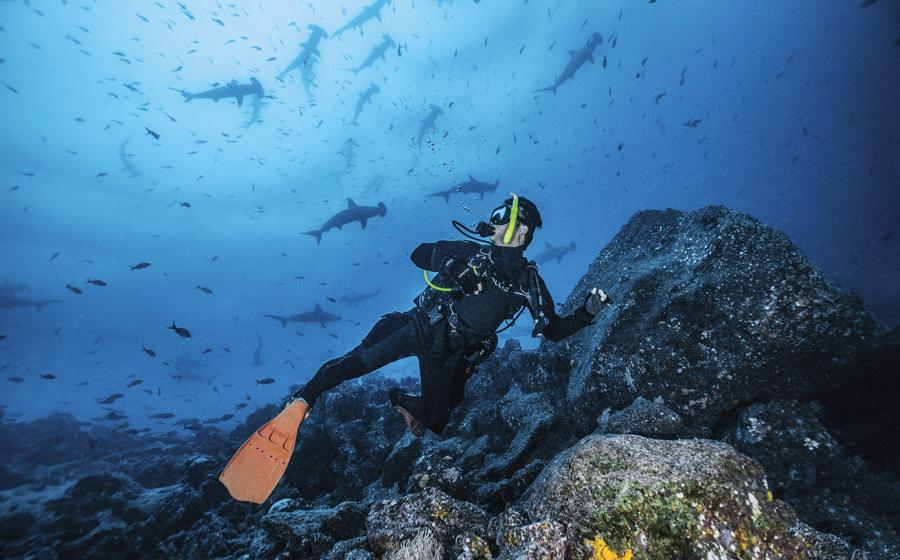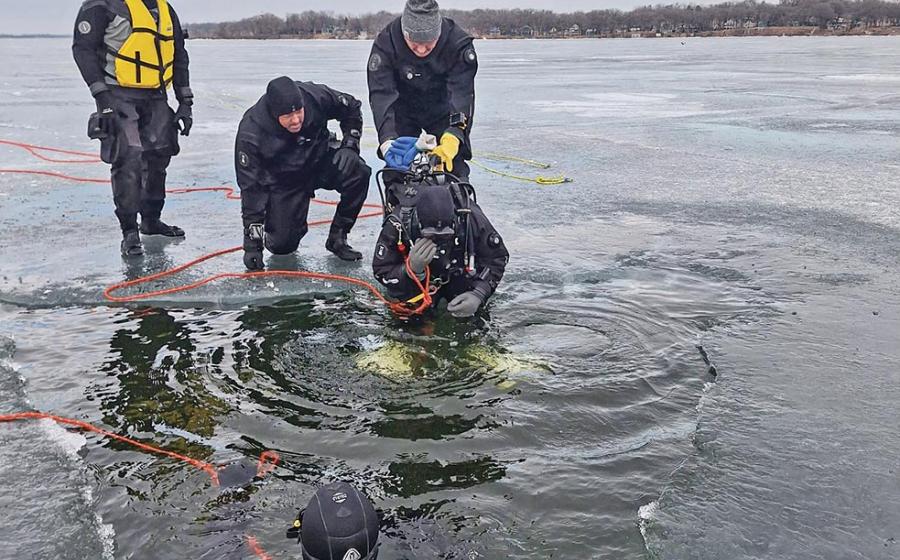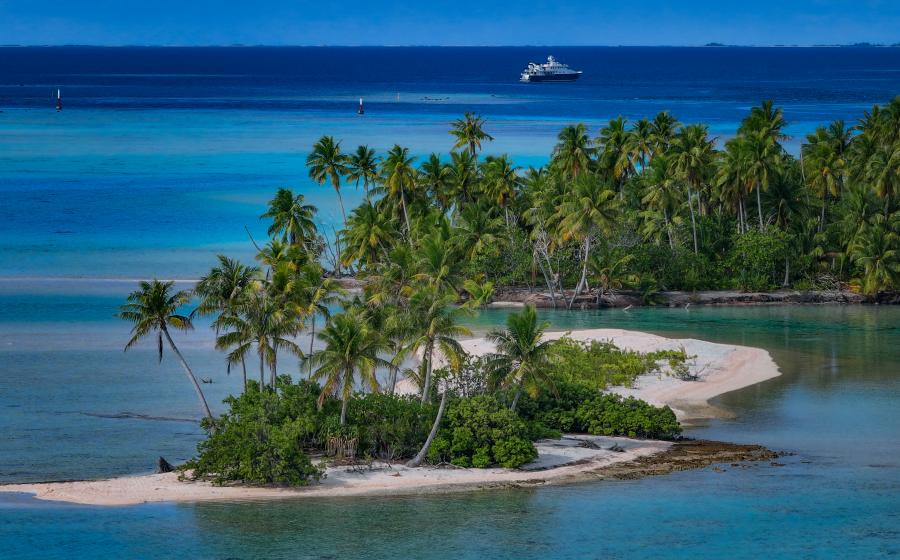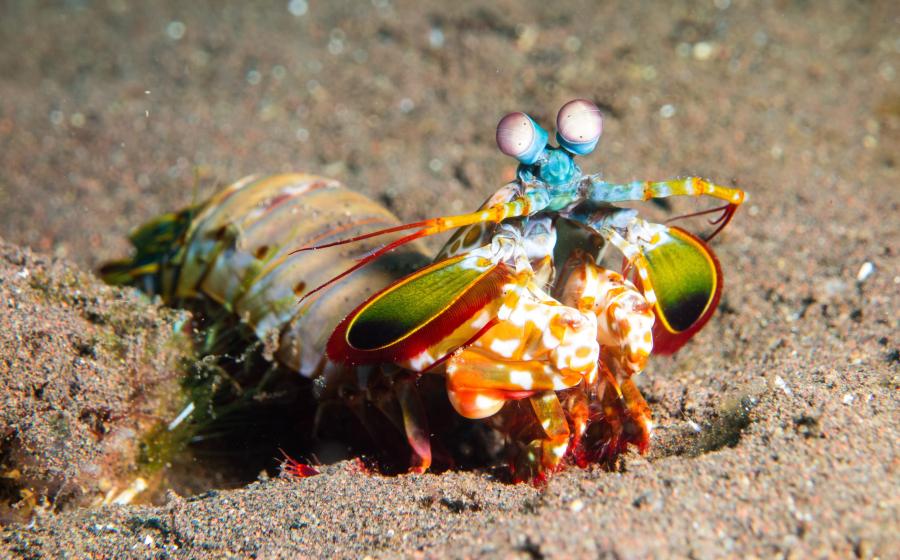Top 25 Exotic Scuba Diving Trips Around The World
As editors, we needed multiple meetings – and a few friendly debates – as we brainstormed, lobbied and pared down our original list of 100-plus unique dive destinations to this collection of 25 of the world's out-of-the-ordinary spots. Our initial challenge: To define the attributes of an exotic dive locale – after all, what might be special to one diver might not be that remarkable to another. Our consensus: Near or far, warm water or cold, an exotic dive location is any place that's off the radar and offers something truly exceptional. (In some cases, so exceptional that local divers almost didn't want to share it with us.)
We think we've found the perfect mix of noteworthy dive getaways to keep divers in search of unique adventures happy – from classic but rarely visited Caribbean sites in St. Lucia, Tobago and Cuba, to wild open-ocean diving in the Pacific off Cocos Island and the Solomon Islands, to lesser-known places like the Azores archipelago in the Atlantic and the islands of Malta in the Mediterranean.
It's time to pack your gear for a trip that's truly special.
Don't see what you like here? Check out our picks for 50 Best Dive Sites in the World!
Yucatan Cenotes
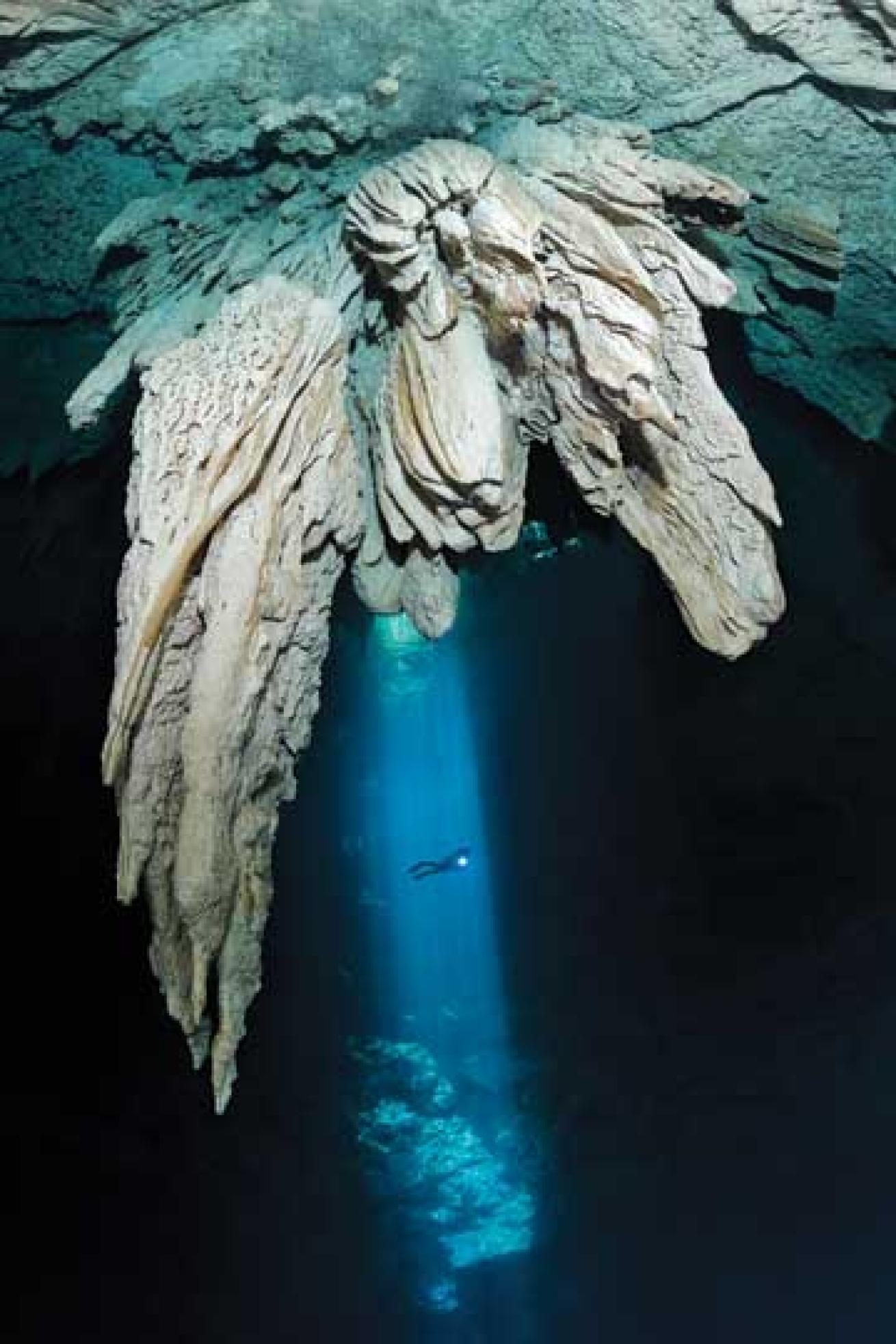
Brandon ColeThe Pit cenote in Mexico
A TYPICAL DAY
Morning pickups by Pro Dive Mexico’s cave and cavern guides deliver divers through the interior jungle to a water-filled sinkhole shrouded by tropical foliage. After a safety briefing on cavern technique, descend from the swim platform into clear water at the mouth of the cenote, following your guide along the white cave line that marks your route. Swim past prehistoric stalactite formations, look for fossils embedded in the rock, and fin-kick into air-filled chambers deep below the jungle floor. Trips include two cenote dives and a picnic lunch.
WHAT MAKES IT UNCOMMON
The Yucatan’s cenotes offer doorways to the world’s longest underground rivers. Divers have found artifacts from the Maya, who considered the cenotes portals to the underworld.
3 DON’T-MISS DIVES
1 Taj Mahal Discover an air pocket in a bat cave, where holes in the ceiling shoot spectacular beams of sunlight through the crystal-clear waters.
2 Kukulkan Explore the hypnotic rippling effects of a halocline — a layer of heavier salt water sitting beneath the fresh water — at around 30 feet.
3 The Pit The deepest of the cenotes at nearly 400 feet, divers descend into a suspended cloud of hydrogen sulfide at about 100 feet, where ancient tree branches grasp in the dark.
TOPSIDE TIP
Take a day trip south along the coast to explore the seaside ruins of Tulum, or spot rare endemic birds like the clavinet emerald hummingbird in the Sian Ka’an Biosphere Reserve. — Travis Marshall
CONTACT: prodivemex.com
Azores
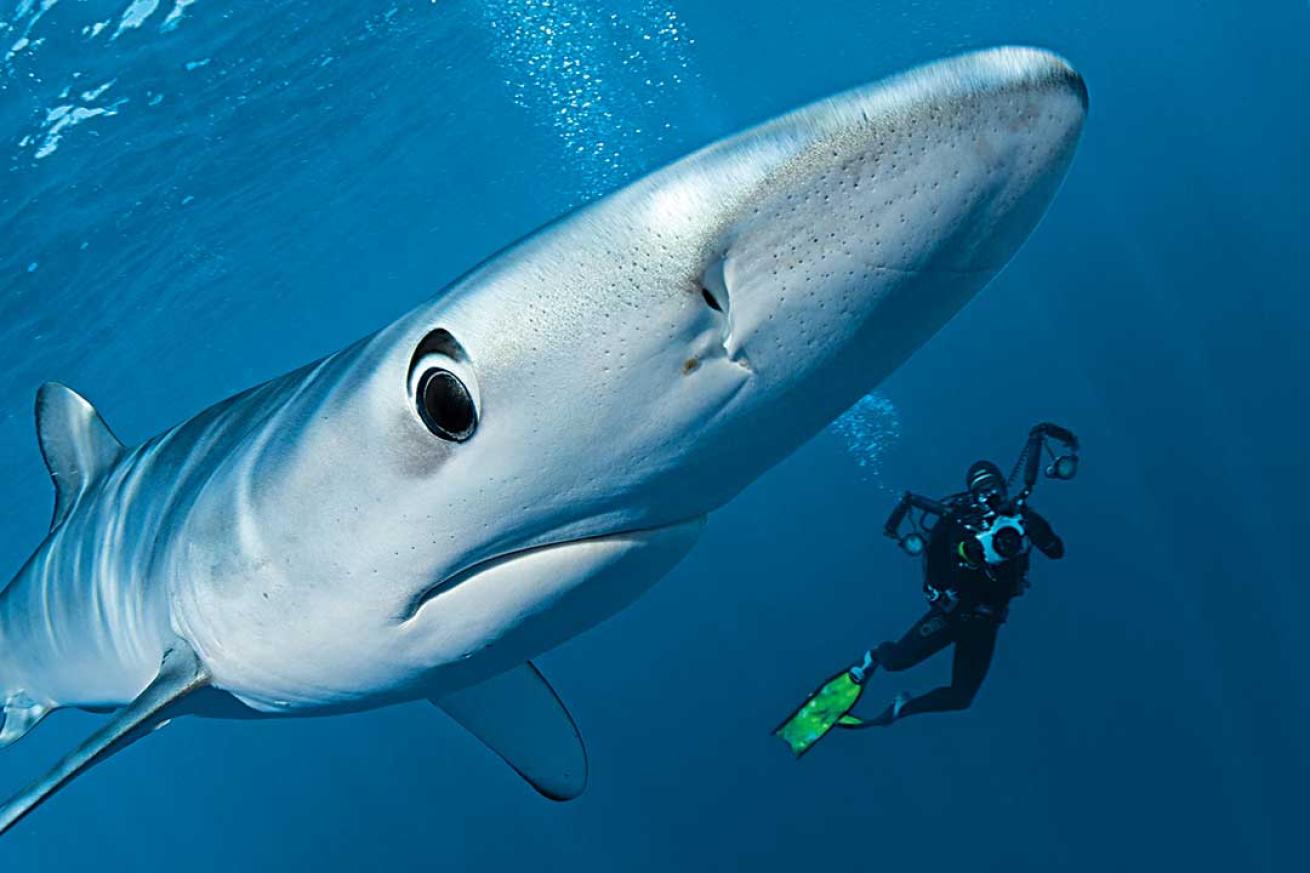
Franco BanfiA blue shark off Pico Island
A TYPICAL DAY
The landing point for divers at this remote spot is Pico Island’s Portuguese-flavored Madalena. In the heart of the Atlantic Ocean, buffeted by the Gulf Stream, the Azores is ideal for blue-water diving; day trips to the Princess Alice Bank offer schools of mobula rays, while mako shark trips allow encounters with the fastest sharks in the sea.
WHAT MAKES IT UNCOMMON
Set along the Mid-Atlantic Ridge, 850 miles from a continent, the Azores offers open-ocean diving with sharks, rays and whales.
3 DON’T-MISS DIVES
1 Princess Alice Bank Summer months bring schools of mobula rays and a plethora of pelagic fish.
2 Ilhéus da Madalena A swim-through leads to a stingray mating area with throngs of rays, sea bream and moray eels.
3 Blue and Mako Shark Diving From July to October shark wranglers get divers close to these distinctive apex predators.
TOPSIDE TIP
Pico Island’s vineyards have earned UNESCO World Heritage Site status; make time for a tasting around Lajido, Cabrito and Madalena. — TM
CONTACT: diveazores.net
British Columbia
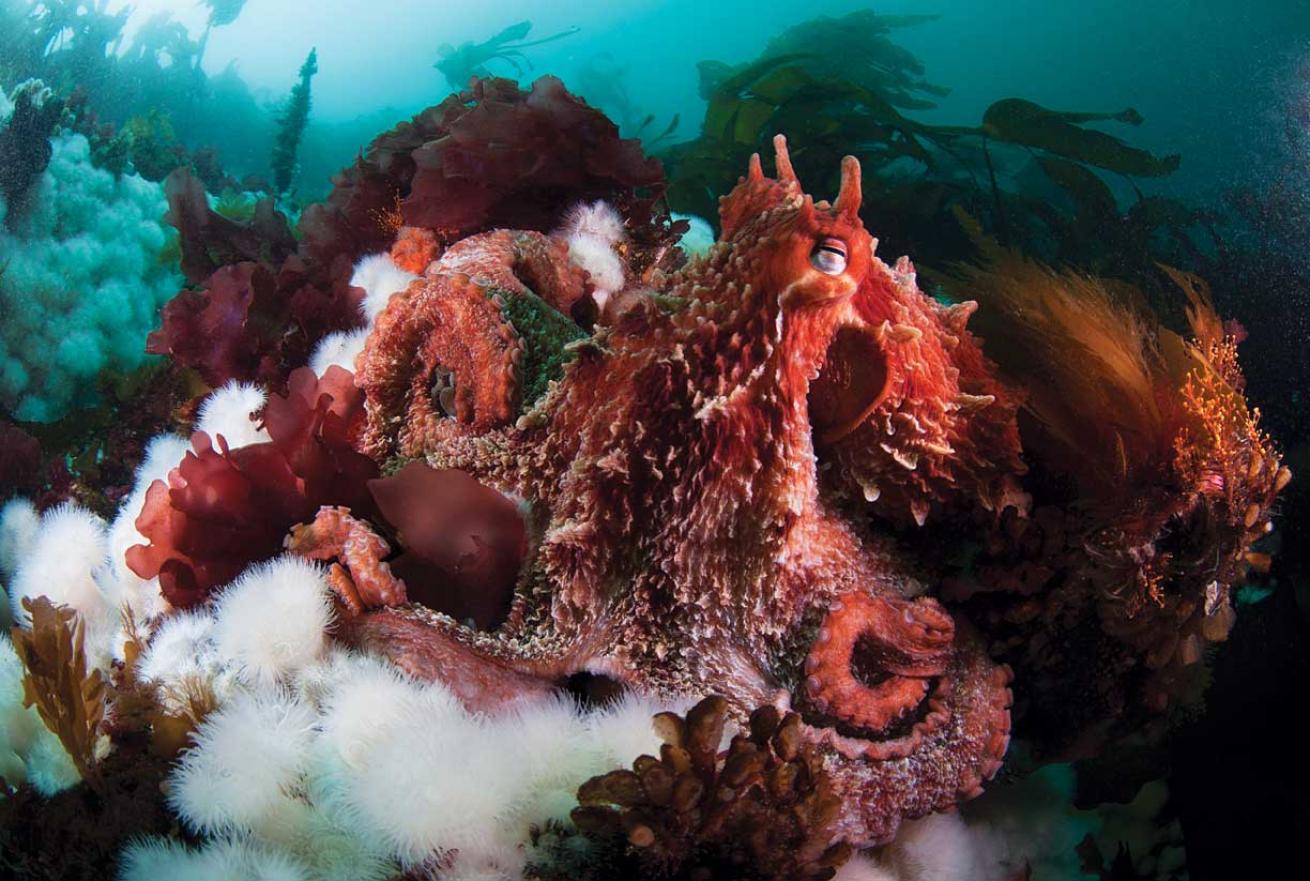
Mauricio HandlerA giant Pacific octopus
A TYPICAL DAY
You’ll start with sipping piping-hot coffee as beams of rising sun pierce the evergreen branches at God’s Pocket Resort. Enjoy dives to remote walls and passes where plumose anemones grow 3 feet long, rockfish dance among strands of bullwhip kelp, and dolphins and orcas stalk fish in the open water. Spend surface intervals hiking or kayaking topside, and an after-dark shore dive at the dock offers the chance to spot Puget Sound king crab and giant Pacific octopuses hunting among the pilings.
WHAT MAKES IT UNCOMMON
Fast tidal currents push nutrient-rich water through the deep channels between the islands, creating technicolor walls of cold-water corals where Muppet-faced wolf eels peer from rocky dens.
3 DON’T-MISS DIVES
1 Browning Wall The legendary cold-water dive can be dived only at slack tide, when you can see massive basket stars and candy-striped shrimp inside anemones.
2 Castle Gap A rare spot where it’s safe to dive on the tidal current, this narrow channel offers a fast drift along a sheer wall with massive anemones and cup corals.
3 Hunt Rock A shock of kelp tops this undersea pinnacle, along with colorful anemones and decorator crabs hiding in the safety provided by encrusting corals.
TOPSIDE TIP
Keep your eyes peeled for orcas, minke whales, and harbor seals frolicking at the surface; during summer spot humpback whales feeding just off the beaches. — TM
CONTACT: oceanprodivers.com
Yap
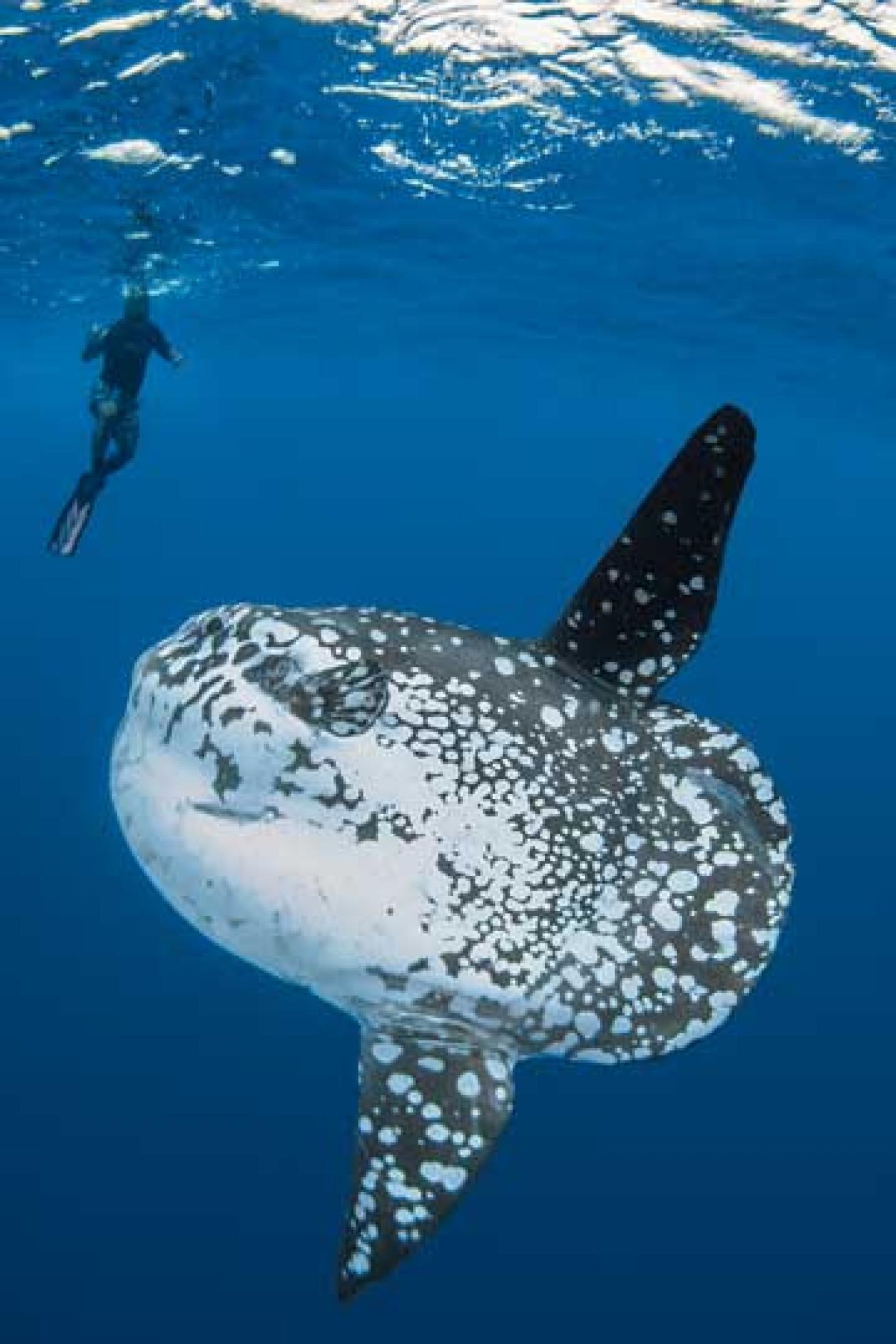
Andy SallmonA diver shares the water off Yap with a mola mola
A TYPICAL DAY
Divers flock here for the year-round manta sightings but also to explore Yap’s unspoiled reefs. From sunny coral gardens to walls of soft corals, all are populated by heaps of marine life big and small, including ocean sunfish. Currents feed the island’s creatures, and offer drift dives that rival any on the planet.
WHAT MAKES IT UNCOMMON
Isolated deep in Micronesia, the tiny island benefits from being off the beaten path and sees very little traffic on the reefs, unless you count the parade of giant Pacific manta rays for which the region is famous.
3 DON’T-MISS DIVES
1 Miil Channel Winter means mating season for the pelagics, when they dance in trains numbering in double digits.
2 Vertigo Chumsicle feeding attracts gray reef, silky, and white- and blacktip reef sharks. And the nearby wall — the West side’s steepest — isn’t bad either.
3 Yap Caverns These caverns have skylights and swim-throughs with soft corals and whitetips snoozing in the shadows.
TOPSIDE TIP
Locals share their Micronesian customs, art and architecture at the Bechiyal Cultural Center. — Eric Michael
CONTACT: Manta Ray Bay Resort and Yap Divers
Cocos Island
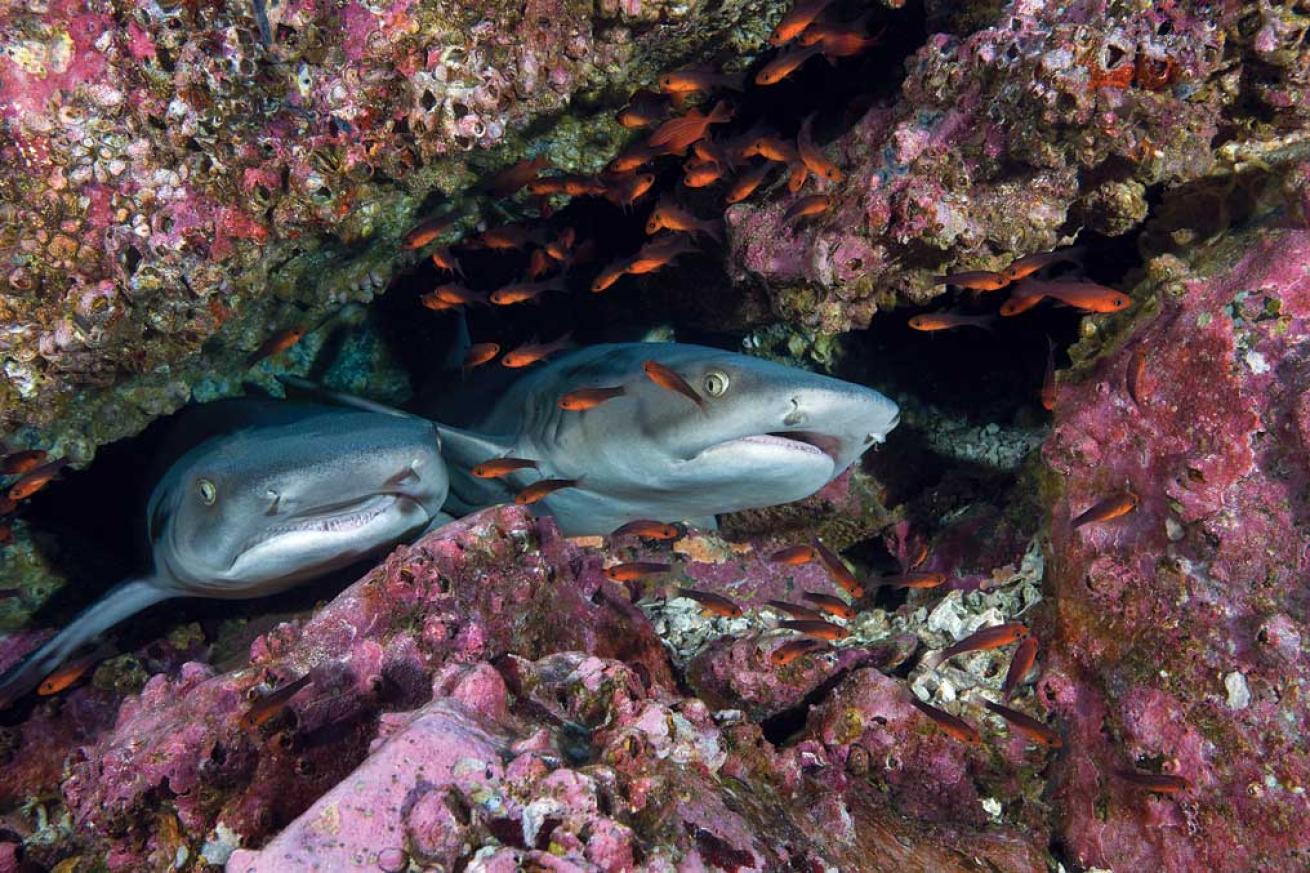
Jeff YonoverWhitetip reef sharks off Cocos Island
A TYPICAL DAY
Good things come to those who wait. But for those who undertake the open-ocean ride on one of the Undersea Hunter vessels out to Cocos Island, off Costa Rica’s west coast, great things are coming, like massive stingrays, one of the the world’s best night dives and, of course, the reason you’re out here: sharks. Specifically hammerheads, which home in on the island like it’s an oasis in the desert. The waters are so thick with sharks that if you strike out with the hammerheads, you’ll still be spoiled by Galapagos sharks, and swarms of whitetips and tiger sharks.
WHAT MAKES IT UNCOMMON
This is no ordinary liveaboard trip: You’re 36 hours from the nearest land, surrounded by sharks. It might make ordinary people quake in their boots, but it’s a diver’s dream.
3 DON’T-MISS DIVES
1 Manuelita Coral Gardens Unless you spook easily, don’t miss this night dive where you’re followed by packs of whitetip reef sharks that hunt by your light.
2 Bajo Alcyone It might take a Herculean effort to get down onto this submerged pinnacle (currents can be that strong), but the reward is hundreds of hammerheads.
3 Dirty Rock Steep walls that drop down from this tiny rock are home to massive schools of trevally and snapper, surrounded by Galapagos sharks and hammerheads.
TOPSIDE TIP
There aren’t many opportunities for testing your sea legs on land, but try a hike near the ranger station to see picturesque waterfalls and native birds. — David Espinosa
CONTACT: underseahunter.com
Tobago
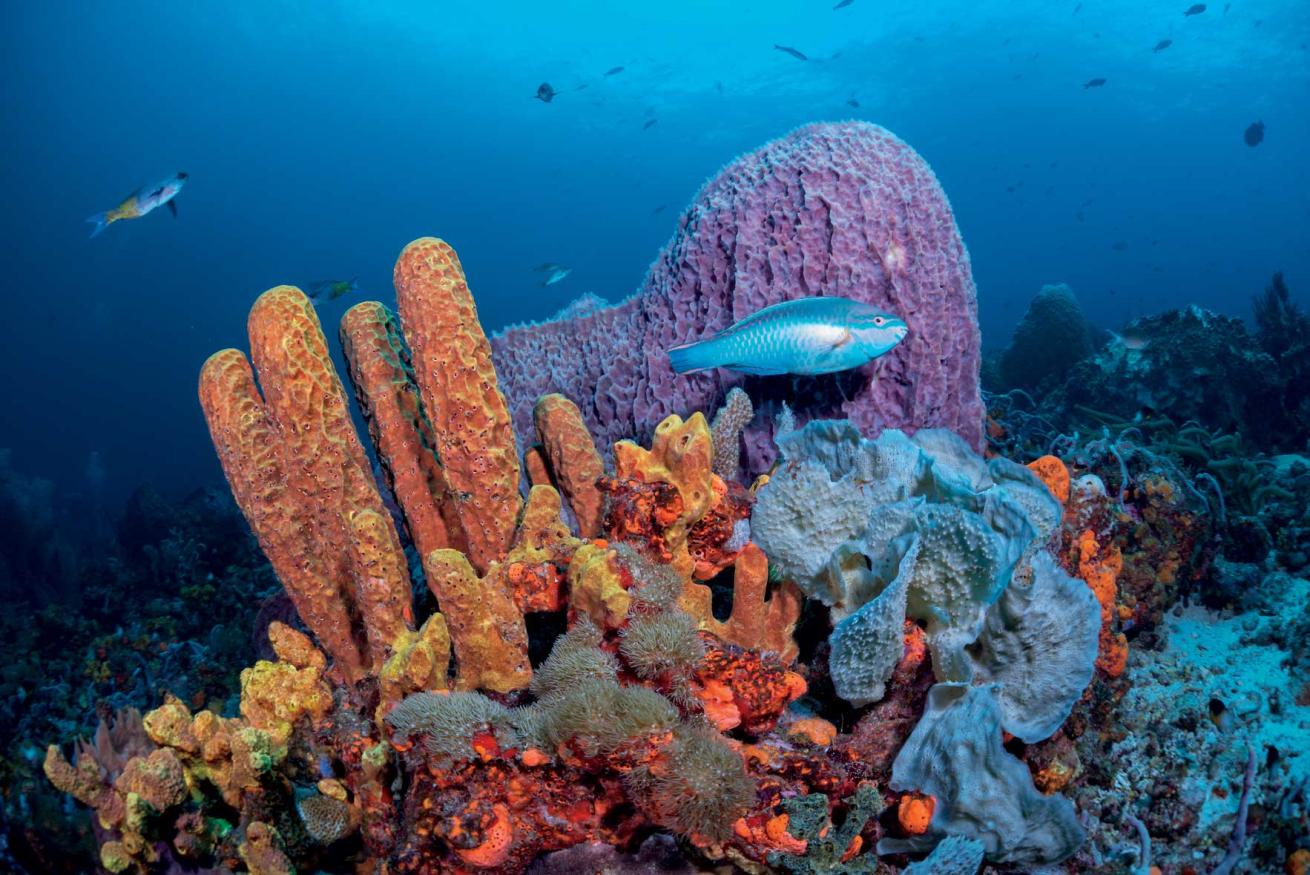
Solomon BakshA princess parrotfish explores a reef off Tobago
A TYPICAL DAY
Whether it’s the colorful, current-swept reefs in the south, or the healthy, current-swept reefs in the north, this small island’s diving is the Caribbean’s best-kept secret. Of course, not every dive in Tobago is current-swept — the south’s Maverick wreck lies in a quiet bay, and several of Speyside’s best dives are protected from currents. If you head for Tobago, be prepared for some drift diving, where you can sit back and enjoy the ride.
WHAT MAKES IT UNCOMMON
You may never see another dive boat, giving you some of the Caribbean’s healthiest reefs all to yourself.
3 DON’T-MISS DIVES
1 Maverick This purpose-sunk wreck is festooned with white soft corals and packed with glassfish.
2 Japanese Gardens Gigantic barrel sponges make this look like a rock garden, even when you’re rushing past in a current.
3 London Bridge Not always accessible, this site is famous for a 100-foot-long arch that divers have to pass through single-file.
TOPSIDE TIP
Between dives, gorge on local specialties like “doubles” or roti (if they’re not sold out). — DE
CONTACT: tobagodiveexperience.com
Tonga
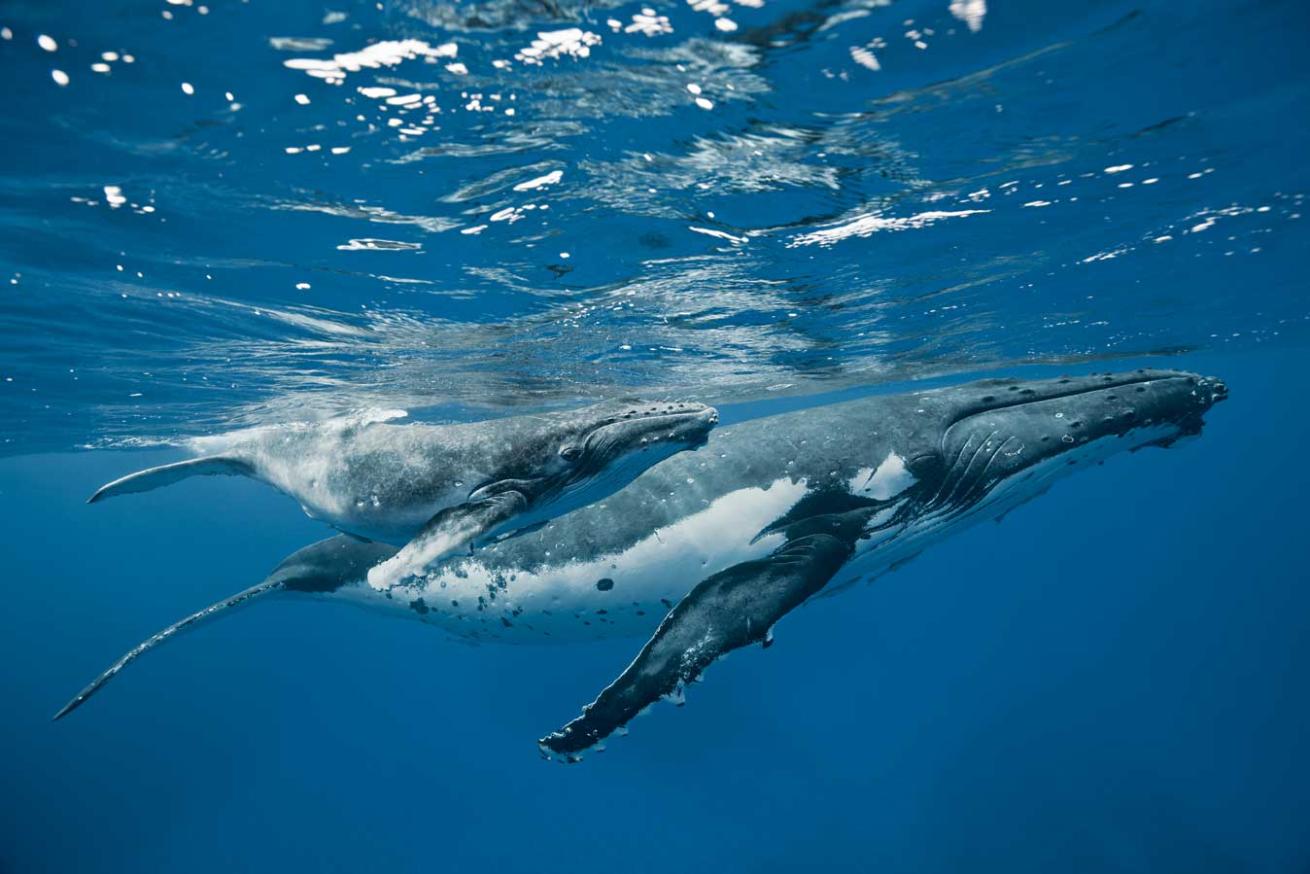
Brandon ColeA humpback whale off Tonga
A TYPICAL DAY
Keeping a keen eye on the horizon for the telltale sight of black-and-white flukes in hopes of being the first to scream “Whale!” will be your main mission aboard Nai’a. The 120-foot steel-hulled sailing liveaboard accommodates 18 guests in nine air-conditioned staterooms. But you won’t spend much time below deck, as the main attractions — snorkeling and free diving with humpback whales — will keep you wet and smiling. The giant mammals travel annually from their Antarctic feeding grounds to mate and give birth in the warm, clear waters off the tiny Polynesian island. Memorable encounters range from watching a mother teach her calf to breech the surface to a competition pod of males chasing a fertile female. And it’s all accompanied by a haunting symphony of whale song.
WHAT MAKES IT UNCOMMON
Tonga is one of the few places where it is legal to swim with humpback whales.
3 DON’T-MISS DIVES
1 Whale Snorkeling Bring a wide-angle lens to capture spectacular breaching and tail-lobbing humpbacks.
2 Mariner’s Cave This cavern dive offers the brave a view of a creepy fog created in the air chamber by surge. It’s also a great place to spot multihued nudibranchs.
3 Clan McWilliam This 423-foot wreck on the edge of Neiafu Harbor rests upright in 120 feet, and offers decades of coral growth.
TOPSIDE TIP
Grab polarized lenses so you can gaze at the whales before you join them. — EM
CONTACT: tonganexpeditions.com
Cuba
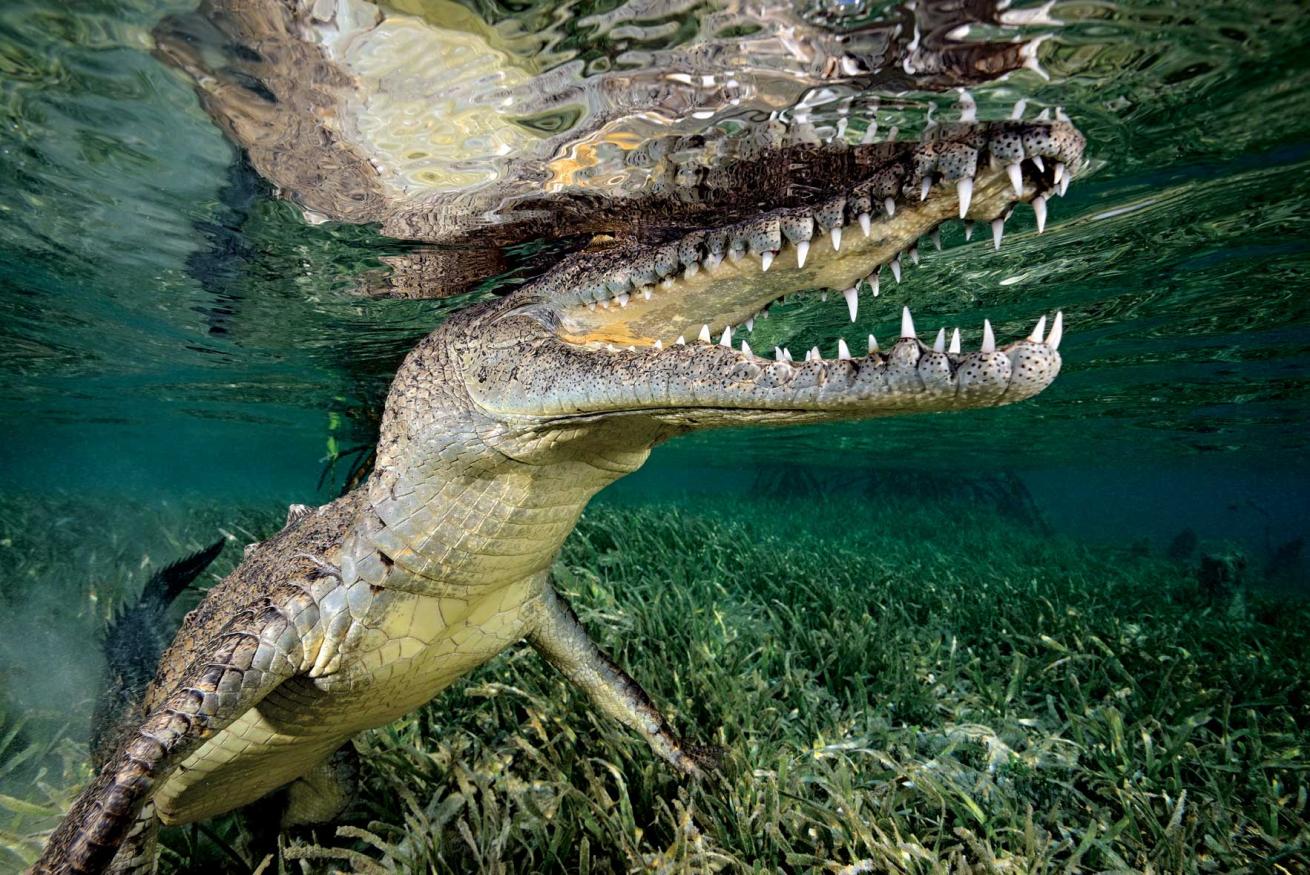
Scott JohnsonAn American crocodile off the coast of Cuba
A TYPICAL DAY
The Gardens of the Queen is the forbidden fruit of the Caribbean. The protected area features pristine reefs and healthy mangroves where life of myriad variety thrives. Exploring is comfortable and convenient aboard Avalon Cuban Diving Services fleet of six liveaboards. Yachts range from the quaint 110-foot Tortuga double-decker houseboat to the luxurious 107-foot Avalon Fleet I, which can accommodate 16 divers in eight air-conditioned staterooms. Sharks are more plentiful than just about anywhere else in the region, and an encounter with saltwater crocodiles adds to the adventure.
WHAT MAKES IT UNCOMMON
Described by marine biologists as a time capsule of the Caribbean, the Gardens of the Queen has been a protected, no-take marine conservation area since the 1960s. (Fidel Castro loved to dive there.)
3 DON’T-MISS DIVES:
1 Farallon This towering coral pinnacle (claimed as one of the best sites in the MPA) is pierced by swim-throughs, and populated by plentiful silky and gray reef sharks.
2 Vicente With a wall plunging hundreds of feet into the blue, this drop-off is home to a rare abundance of black coral.
3 Pipin Alongside caverns offering mysterious places to hunt for macro critters, this site also serves up tarpon and eagle rays.
TOPSIDE TIP
Cuban culture, cuisine and music thrive in tourist-friendly areas of Havana — not to mention the iconic ’50s-era automobiles. — EM
CONTACT: cubandivingcenters.com/en
Raja Ampat
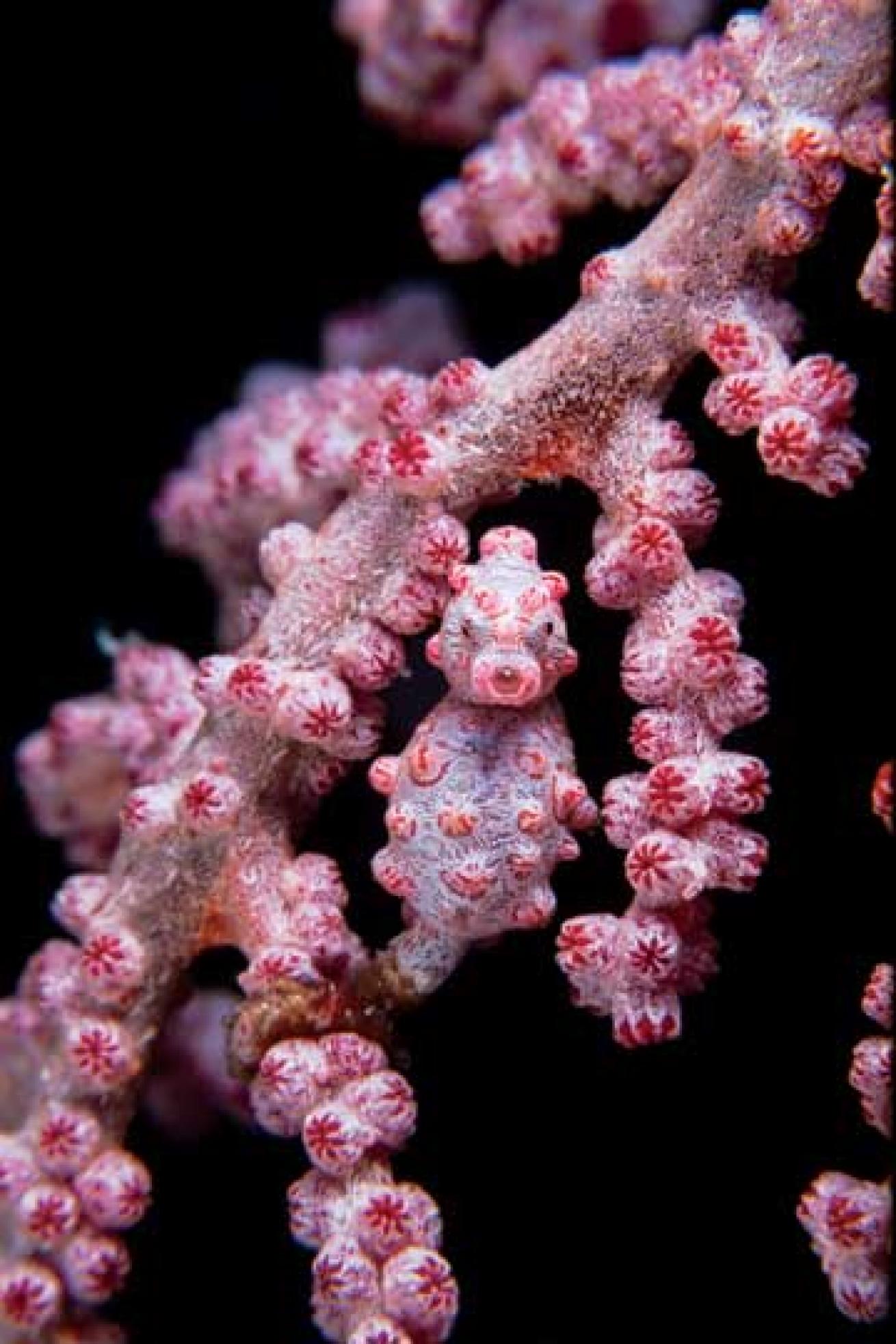
Debbie ArriagaA pygmy seahorse off Raja Ampat
A TYPICAL DAY
Today, everyone’s phone is a GPS, and with Google, you are never lost. While you might think exploration is dead, you too can be an explorer like Magellan in eastern Indonesia’s Raja Ampat. Though you’ll enjoy world-famous dives in the north — including sites around Bird’s Head Peninsula and Raja Ampat — it’s the largely uncharted south where you’ll truly feel like an explorer. Even if it has already been mapped by Google. (It hasn’t.)
WHAT MAKES IT UNCOMMON
Big-fish sites, macro dives, massive schools of fish, and some of the healthiest (and most colorful) coral reefs in the world — Raja Ampat has it all.
3 DON’T-MISS DIVES
1 Figure 8 Rock Head to the southwest corner of this site for a plateau (at 65 feet) chock-a-block with soft corals and sea fans.
2 Andiamo One of the fishiest sites, you’ll want more than one go on this pinnacle thronged by sharks, fusiliers and batfish.
3 Arborek Jetty Bring both a wide-angle (for soft corals and sea fans on the pylons) and macro setup (for Pontoh’s pygmy seahorses) on this shallow dive.
TOPSIDE TIP
After your dive at Arborek, dry off for a tour at the village of the same name. Bring some small gifts for the kids, and you’ll see 1,000-watt smiles. — DE
CONTACT: thearenui.com
Western Australia
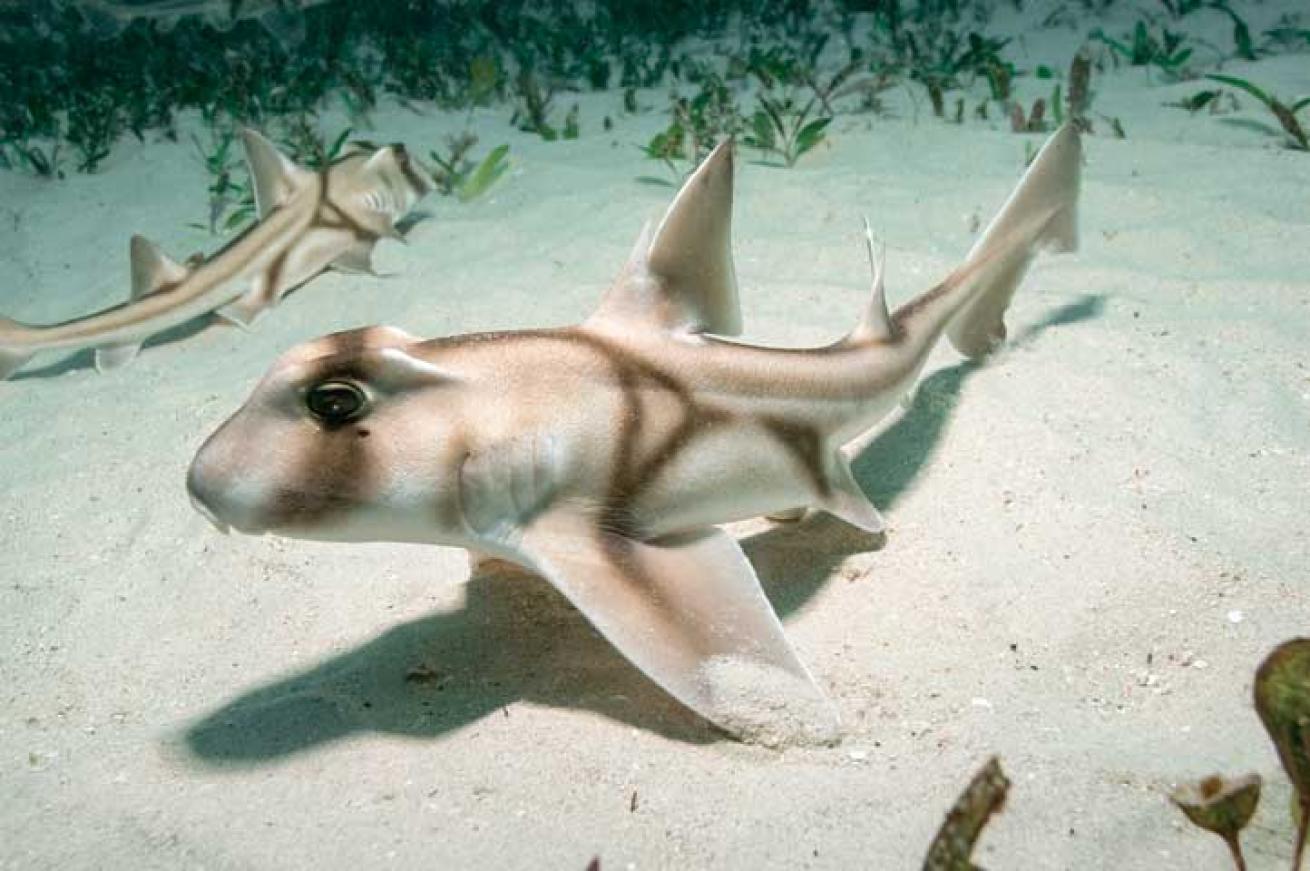
Andy Murch/Oceanwide ImagesA Port Jackson shark off Albany, Australia
A TYPICAL DAY
We like to believe the reason more than 85 percent of Australians live near the coast is because the diving is really that good. Though Queensland — with the Great Barrier Reef — gets most of the accolades, Western Australia might offer the continent’s most diverse diving: whale sharks on Ningaloo Reef, New Zealand fur seals and Australian sea lions on Seal Island (Albany), iconic gray nurse sharks at Rottnest Island (Perth), and purpose-sunk wrecks, jetties, and more shore dives than you can shake a fin at. Which makes us wonder — what is the other 15 percent waiting for?
WHAT MAKES IT UNCOMMON
Starting at Ningaloo and ending at Albany, Western Australia’s dive sites aren’t just diverse, they’re also geographically far apart.
3 DON’T-MISS DIVES
1 Busselton Jetty There’s plenty to explore under this timber-piled jetty, and with an average depth of 25 feet, there’s plenty of time to do it.
2 HMAS Perth Purpose-sunk in 2001 off Albany, the former guided-missile destroyer is now home to wobbegongs, western blue devils and samson fish.
3 Rottnest Island Perth divers have it good, with more than 200 sites on this island just 12 miles offshore. Go for the caves, and stay for Australian divers’ pride and joy: gray nurse sharks.
TOPSIDE TIP
After diving the purpose-sunk HMAS Swan, near Dunsborough, take a 40-minute drive south to winery-rich Margaret River, Australia’s answer to California’s Napa Valley. — DE
CONTACT: perthscuba.com
Belize
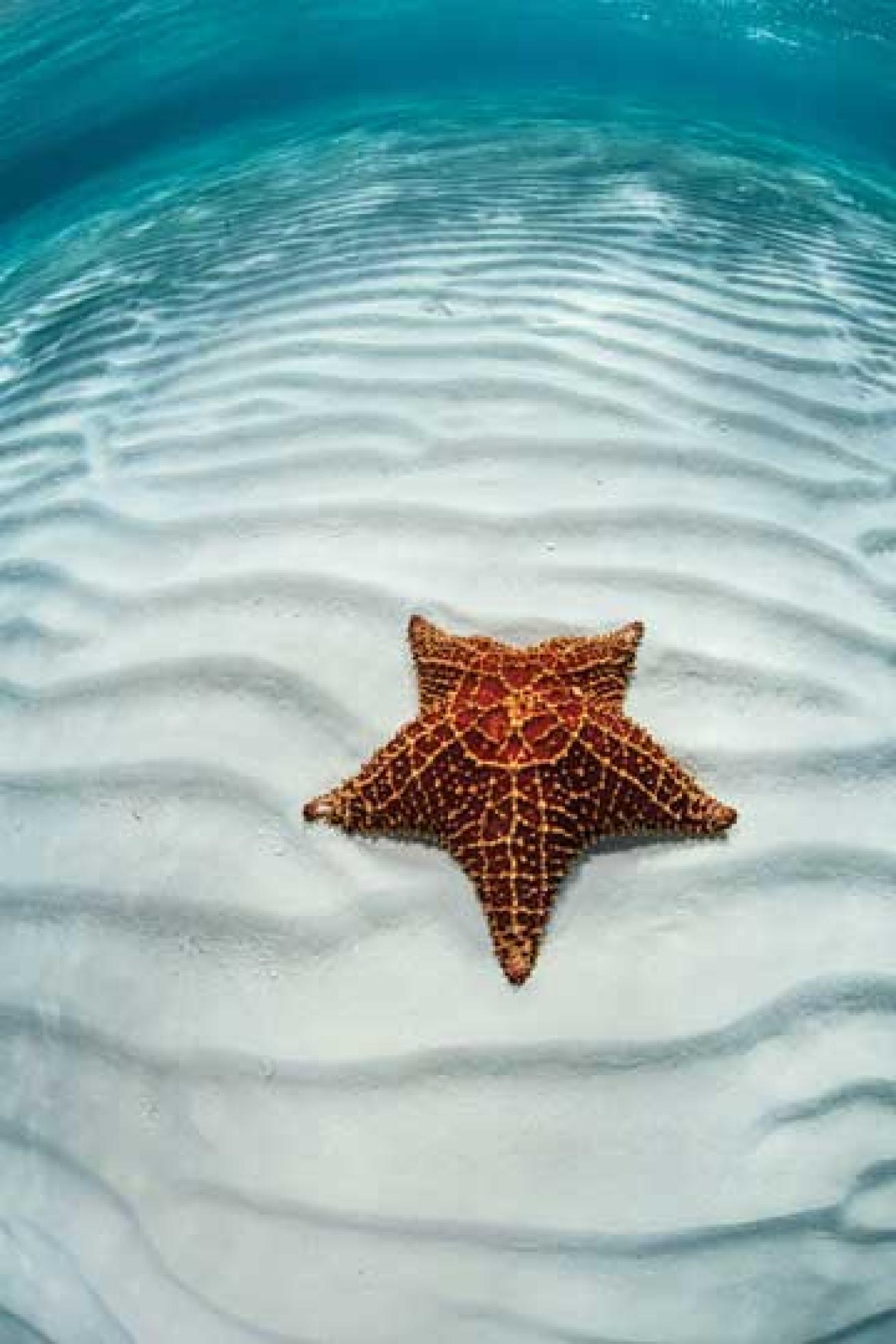
Ethan DanielsA starfish in Belize
A TYPICAL DAY
The wildlife doesn’t sleep in on Turneffe Atoll, one of Belize’s three vibrant atolls. Most of the sites (close to 70 of them) are only a five-minute boat ride away, making surface intervals on your private porch a cinch. Boats leave two to three times a day, so expect to log at least 15 dives a week.
WHAT MAKES IT UNCOMMON
Diving sites like the Elbow, a carnival for the sea’s showiest creatures, often means a full day in a boat, but stay at Turneffe, and you can drop by like an old neighbor.
3 DON’T-MISS DIVES
1 Half Moon Caye Wall If Dr. Seuss designed a 70-foot-deep wall dive, this would be it: purple sponges, zany tunnels, and fish so big and colorful, they could make off with Christmas.
2 Aquarium Coral ridges help channel currents to feed crinoids, lace corals, and all manner of creatures from parrotfish to rays.
3 Tackle Box Canyon The western hemisphere’s biggest barrier reef pushes right up against Ambergris Caye, and Tackle Box highlights the best of it with swim-throughs, rays and nurse sharks.
TOPSIDE TIP
Stick to the sea, and you’ll see only half of what makes Belize so special. Head inland to hike to waterfalls and visit the big cats at the Jaguar Preserve. — TM
CONTACT: Turneffe Island Resort
Iceland
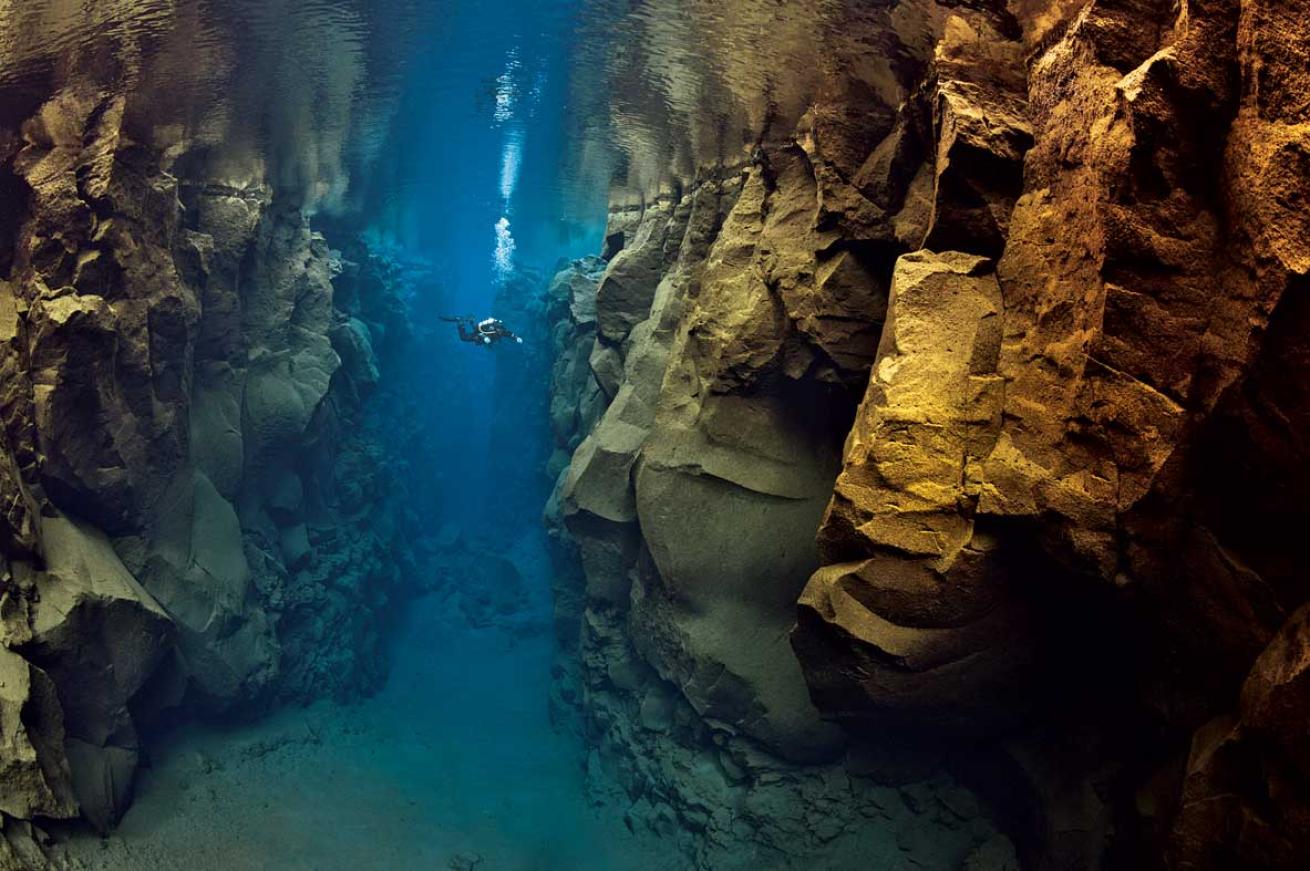
Alex MustardThe Silfra fissue
A TYPICAL DAY
The volcanic island is popular for music festivals, hot springs the size of Olympic swimming pools, and epic cold water that has been filtered for 300 years from the glacier to the lake. You’ll find unparalleled visibility, big animals like orcas, and mesmerizing lakes with vents that bubble — but only if there’s been an earthquake. Don’t worry, last year saw more than 35,000 earthquakes — small ones, but big enough to fuel the vents. For dry time, head outside the capital city of Reykjavik for ATV riding, dog sledding and snowmobiling.
WHAT MAKES IT UNCOMMON
Dive Iceland and you can brag that you’ve finned in between two continental plates, and in the clearest water on Earth, glacial-fed and lava-filtered for at least 30 years.
3 DON’T-MISS DIVES
1 Silfra Aka the “Big Crack,” this is the nature-made fissure between the North American and European continental plates.
2 Gardur Pier Divers have encountered killer whales and spotted dolphins, as well as snails, wolf fish and monkfish.
3 Strytan A geothermal chimney within recreational dive depths, this site is found on the northern part of the island. It might seem like a haul to reach until you consider that in the Pacific, the majority of oceanic chimneys are nearly 2 miles deep.
TOPSIDE TIP
Make reservations at the Reykjavik bar called Tapas, one of the city’s most popular hangouts, known for small plates of local fare like smoked puffin and local fish. — Brooke Morton
CONTACT: scuba.is
Bali

Alex TyrellA school of jacks off Tulamben
A TYPICAL DAY
On the early-morning drive up Bali’s east coast to dive Tulamben’s Liberty wreck, you might stop to take pictures of a colorful religious procession, or of a young girl offering your driver a water blessing at a roadside temple. When you finally arrive at the world-famous site, you’ll stop to get out, dive and take more pictures — of the fishy wreck, some of the best macro in Indonesia, and colorful reefs too magnificent to capture with your widest wide-angle lens. Best of all, the next day you’ll get back in the car and start all over again.
WHAT MAKES IT UNCOMMON
Bali offers a unique blend of culture, natural scenery, warm, beautiful people, and the quintessential introduction to Indo-Pacific diving.
3 DON’T-MISS DIVES
1 Liberty Wreck No trip to Bali is complete without a dive on this World War II transport ship that is almost 400 feet long and a fabulous fish magnet.
2 Seraya Secrets This black-sand shore dive is home to cryptic frogfish and seahorses, patterned nudibranchs, mimic octopuses, and oddities like harlequin shrimp.
3 Manta Point Once you’ve had your fill of macro and wrecks, head to the southwest tip of Nusa Penida, a 40-minute boat ride from Bali, for mantas year-round.
TOPSIDE TIP
Balinese landscapes are a photographer’s dream, with views of rice paddies, rolling hills, and smiling children in school uniforms. — DE
CONTACT: aquamarinediving.com
Tofo, Mozambique
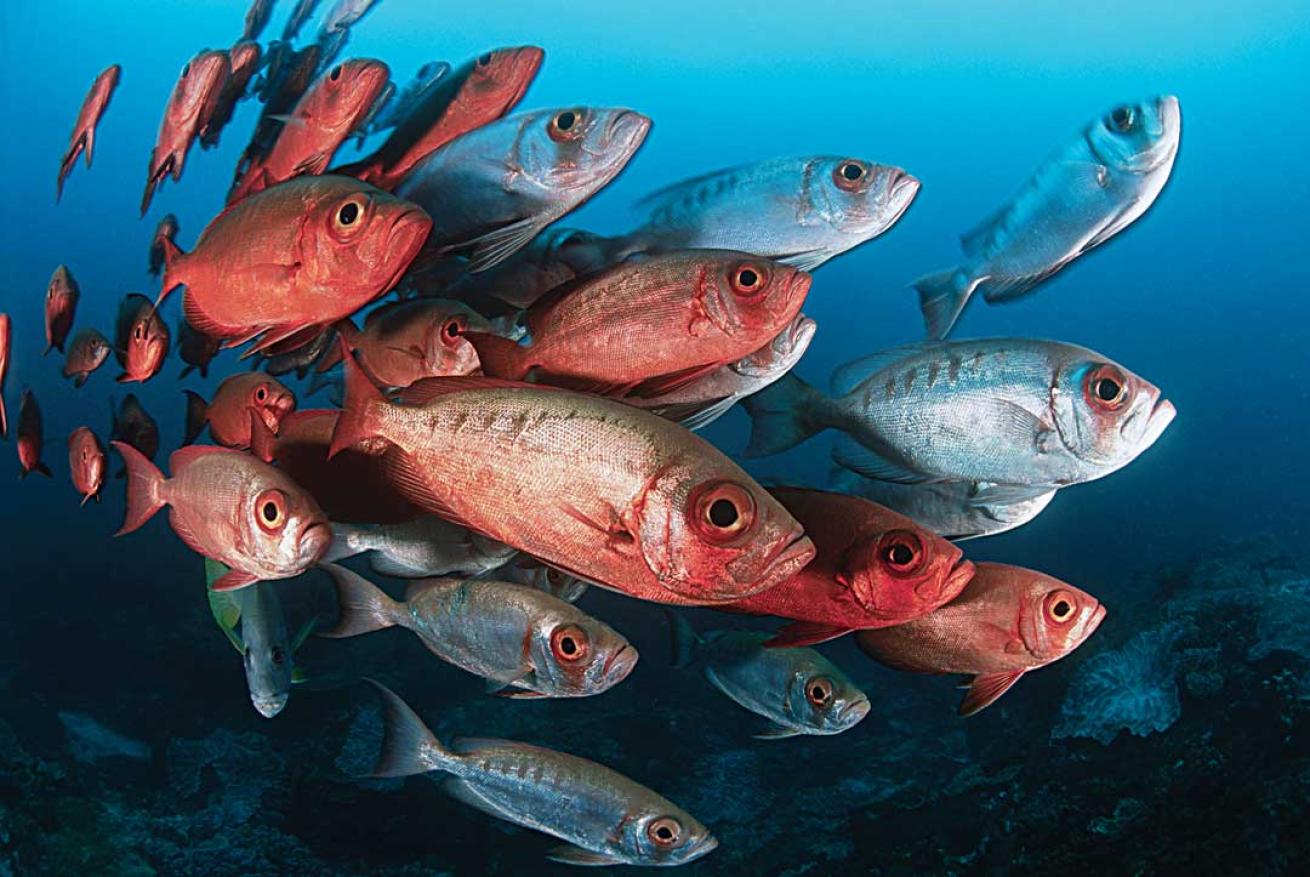
Moodboard/CorbisCrescent-tail bigeyes off Mozambique
A TYPICAL DAY
Everything’s wilder in Africa, from the animals (lions and elephants) to the landmarks (Kilimanjaro and Stanley Falls) — and so is the diving. Leave your macro lens at home for a trip to Tofo, where massive manta rays patrol the Indian Ocean’s vibrant reefs, humpback whales migrate along the coast from May through October, and whale sharks — up to 30 at a time — are seen year-round. There’s no taming Africa.
WHAT MAKES IT UNCOMMON
Tofo is the home of giants: sharks, mantas and whales. If you could ever tire of that, colorful reefs also shelter tinier treasures like frogfish and nudibranchs.
3 DON’T-MISS DIVES
1 Manta Reef Grouper, trevally, morays and dozens of manta rays (with 25-foot wingspans) come here to be groomed at the three cleaning stations.
2 Amazon One of Tofo’s most challenging sites, this moderately deep reef is home to zebra sharks and whitetip reef sharks, and a resident loggerhead.
3 Praia da Rocha Fusiliers and yellowtail barracuda give color to this shallow dive, which is also good for encountering whale sharks.
TOPSIDE TIP
Pair your dive trip with an overland safari to a national park like the Maputo Elephant Reserve. — DE
**CONTACT: **diversityscuba.co.za
Solomon Islands
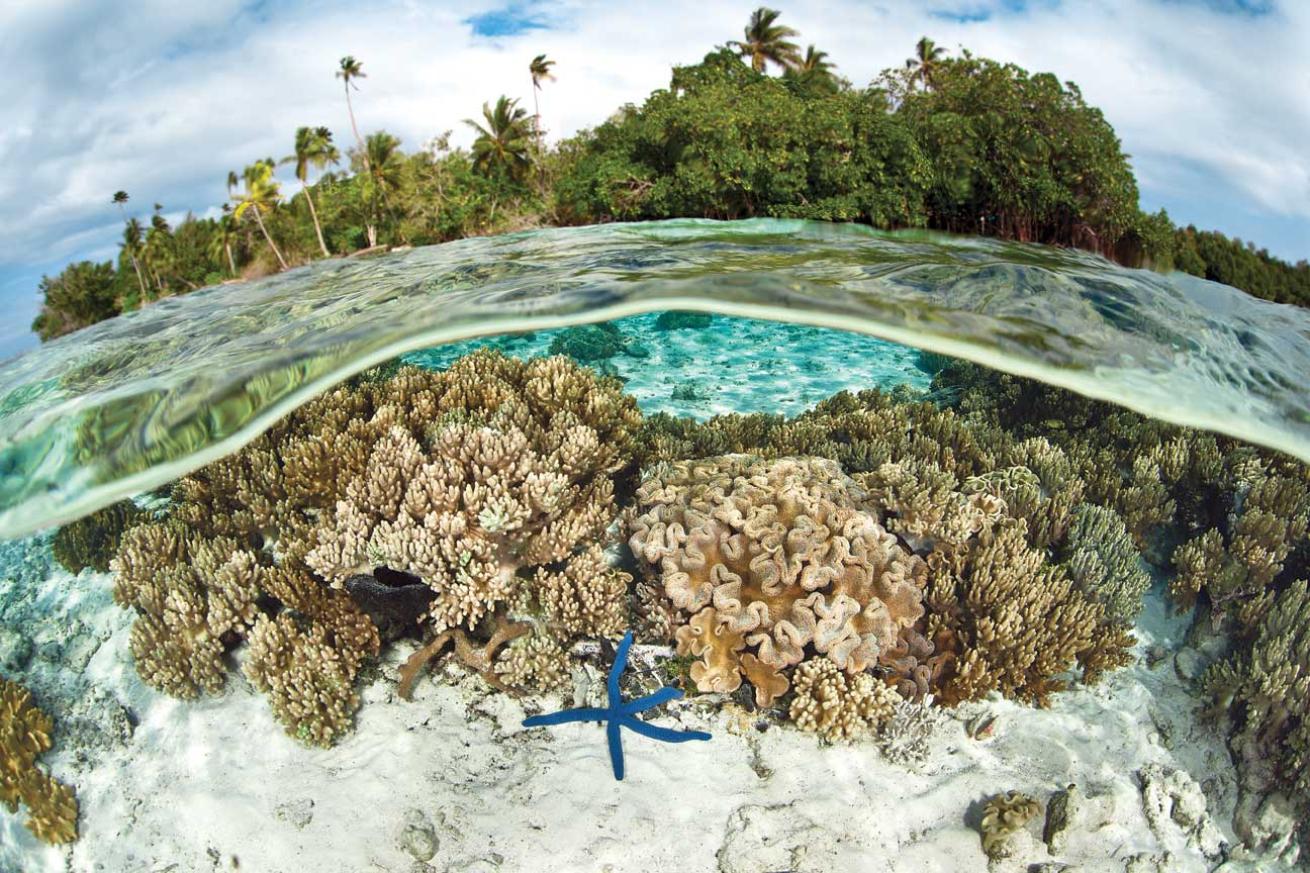
Ethan DanielsSoft corals thrive off the Solomon Islands.
A TYPICAL DAY
These isles offer unfettered exotic beauty, no crowds, charming islanders, WWII history and extraordinary diving. With minimal tourism, locals embrace visitors with enormous smiles, songs, fresh produce and perhaps the finest carvings in the Pacific. Most divers join a liveaboard to cruise the outer-island groups, though there are a few land-based operations. Five dives a day is the norm, while fresh food is plentiful. With so much to fill every day, it is hard to stay awake after sunset, but the nightly sojourn to the deck to witness an unequaled tapestry of stars is not to be missed.
WHAT MAKES IT UNCOMMON
These fabled tropical islands have largely remained out of public attention since the epic battle of Guadalcanal during WWII.
3 DON’T-MISS DIVES
1 Leru Cut, Russell Islands A natural crack in a vertical wall of limestone leaves a deep, narrow cavern with dancing sun rays — a favorite for photographers.
2 Mary’s Place, Mary Island Schools of barracuda and jacks, along with mantas and sharks, join in with the schools of thousands of brilliant tropicals.
3 Devil’s Highway, Florida Islands Divers “fly” over the lip of a submerged cliff and then duck out of the current while a squadron of large manta rays lines up just overhead. In ideal conditions, 10 to 15 mantas hover almost motionless a few feet away.
TOPSIDE TIP
Telina Village has some of the finest wood carvers in the world. — Tanya G. Burnett
CONTACT: solomonsdiving.com
New Zealand

Brandon ColeDemoiselle fish swarm in the Poor Knights Islands Marine Reserve
A TYPICAL DAY
Motor out of Tutukaka Marina and spend a day exploring below, and above, the water at the Poor Knights islands Marine Reserve, where an unusual blend of marine life thrives against a backdrop of sheer volcanic seamounts. Make a first dive under towering lava-rock arch formations thronged by schooling maomao and endemic species like moki and porae. And spend a second, shallower dive, perusing the rock walls for ornately colored nudibranchs. A long lunch and surface interval allow for bird-watching and kayaking among the islands.
WHAT MAKES IT UNCOMMON
The Poor Knights Islands straddles the line between the tropical and temperate South Pacific, and boasts a unique mix of marine life from both regions.
3 DON'T-MISS DIVES
1 Northern Arch This massive undersea arch is hewn fro the lava rock. During summer, the narrow canyons here are filled with mobs of short-tailed stingrays.
2 Rikoriko Cave The darkness inside the world's largest sea cave offers the chance to see rare marine creatures like nocturnal nudibranchs and carpet sharks.
3 Landing Bay Pinnacle A pinnacle starting at 15 feet and dropping to 150 feet, divers can find firebrick starfish clinging to the rocks, and fish like mackerel and pink maomao cruising the perimeter.
TOPSIDE TIP
Take surf lessons on clean breaks in Sandy Bay or hang ten in a totally different way – by sandboarding down the Te aki Sand Dunes. – TM
CONTACT: diving.co.nz
Fiji
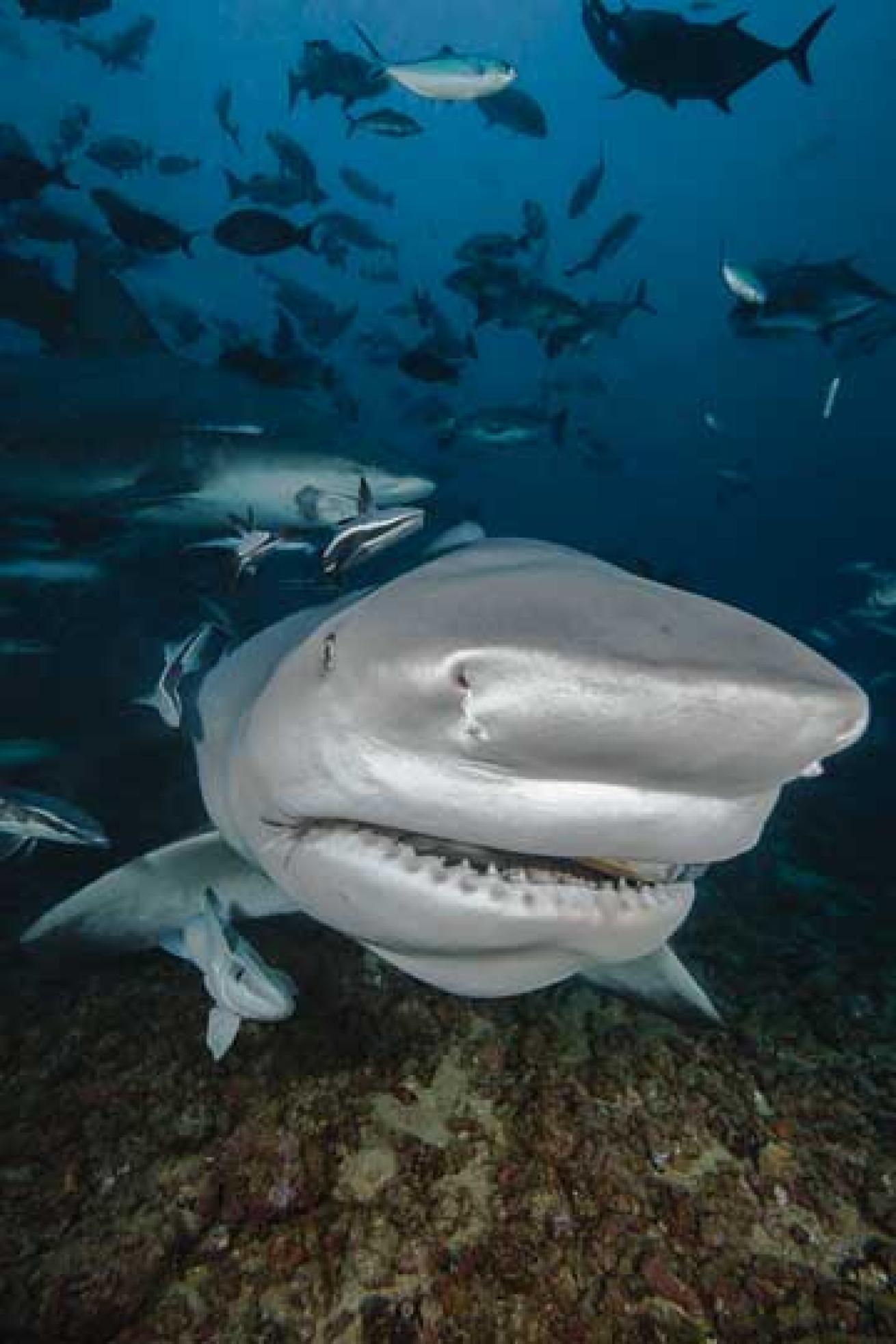
Allison Vitsky SallmonA bull shark off Beqa Island in Fiji
A TYPICAL DAY
From the white-sand islands of the Mamanucas to the deep-purple walls off Vanua Levu, Fiji delivers all the South Pacific touches. Spend your days finning with turtles and your evenings relaxing at a local kava ceremony. The diving is exceptional as much for the wildlife as the topography, with parades of Moorish idols and angelfish swirling along massive walls, historical wrecks and towering columns that make any tank seem too small.
WHAT MAKES IT UNCOMMON
Fiji packs an enormous amount of diversity into the sea. Think 1,000 species of fish and the “soft-coral capital” of the world.
3 DON’T-MISS DIVES
1 Great White Wall A sloping coral tunnel spits you out close to 100 feet down on a wall covered in soft white corals.
2 Grand Central Station At this site in North Save-a-Tack Passage within Namena Marine Reserve, you’ll understand why Jacques Cousteau came to Fiji in the first place.
3 Black Magic Mountain Large bushes of black corals provide an artsy contrast to the unicornfish and coral trout in the currents.
TOPSIDE TIP
Make time for a short hike into Taveuni’s fragrant Bouma National Heritage Park. — Tim Neville
CONTACT: zegrahm.com
Kosrae
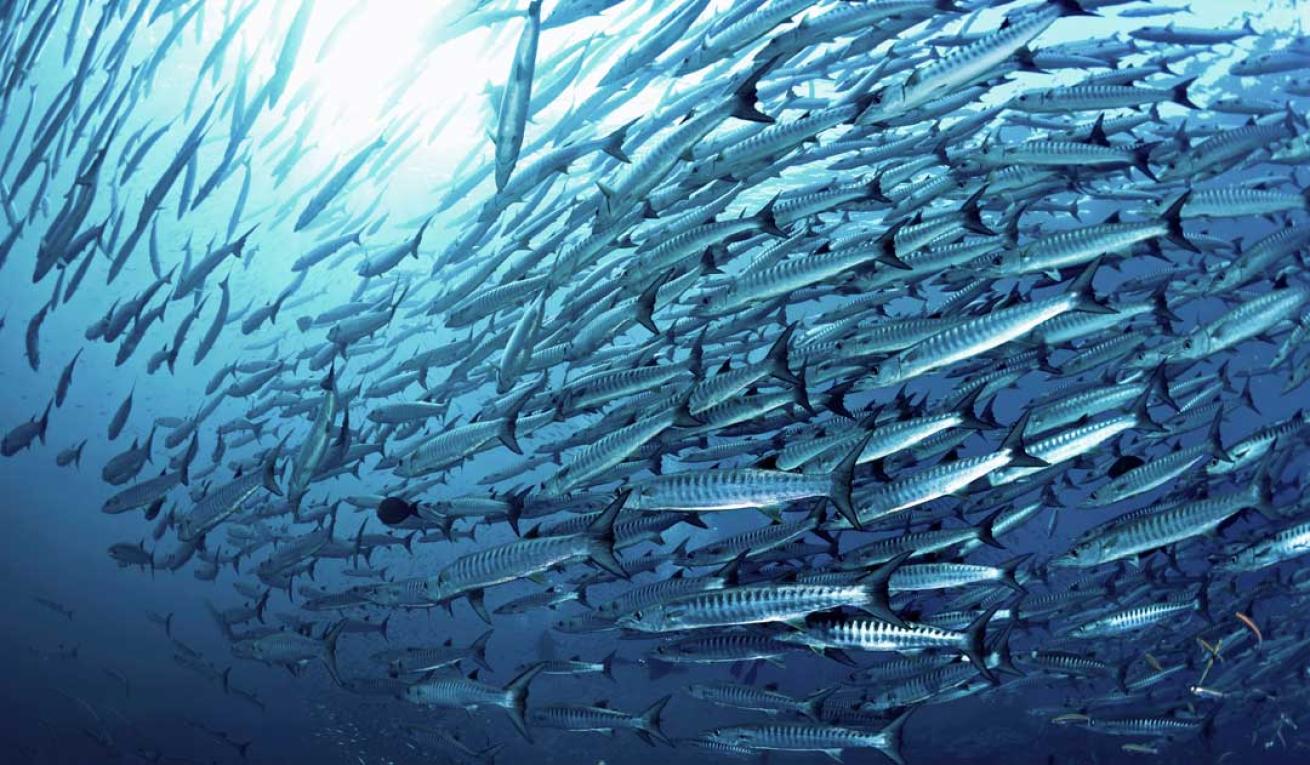
istock photoA school of fish off Kosrae
A TYPICAL DAY
Kosrae is the Micronesian diving ideal, boasting warm, clear water, plentiful pelagic marine life and a rainbow of soft corals that will captivate divers of all breeds, especially photographers. Spend topside time exploring the maze of mangroves via kayak, swinging the afternoon away in a hammock, or dining on local delicacies.
WHAT MAKES IT UNCOMMON
Dive destinations don’t get much more remote — or exotic — than Kosrae. Hidden just north of the equator, the lush island boasts fringing reef systems that are healthy and virtually undisturbed by man.
3 DON’T-MISS DIVES
1 Shark Island The name says it all. Drifting along a sloping wall, divers can watch schools of barracuda and several species of sharks cruise in the current.
2 Walung Drop-Off Swept by strong, life-giving currents, this near-vertical wall is a hot spot for thick schools of horse-eyed jacks, barracuda, Napoleon wrasse and other big fish.
3 Blue Hole This sacred tidal pool (it’s said the remains of ancient Kosrae kings were scattered here) is sheltered from the open ocean and offers snorkelers lots to see, including juvenile reef fish, stingrays and blue-water mangroves.
TOPSIDE TIP
A site of historical and cultural importance, the Lelu Ruins were once the cultural center of Kosrae, where the island’s chiefs ruled hundreds of years ago. Today, the stacked-stone remains of more than a hundred walled compounds and structures are a cool diversion. — EM
CONTACT: kosraevillage.com
British Virgin Islands

Jeff YonoverThe RMS Rhone shipwreck
A TYPICAL DAY
Local dive centers offer pickup service to the many sailors who cruise the BVI, and they bring everything you need. Simply jump aboard the dive boat for a two-tank trip to sites like the wreck of the Rhone, and they’ll return you at day’s end.
WHAT MAKES IT UNCOMMON
A variety of islands big and small — strung closely together along the Sir Francis Drake Channel — makes the BVI one of the best spots for a diving adventure.
3 DON’T-MISS DIVES
1 HMS Rhone On your first dive, explore the deep bow section; spend your second, shallow dive on the wreckage of the stern, smashed against the rocks of Salt Island.
2 Alice in Wonderland This lush coral garden off Ginger Island offers mushroom corals and a colorful kaleidoscope of reef fish.
3 Blonde Rock Yellow fire coral tops this pinnacle, which is lined with ledges housing nurse sharks and lobsters.
TOPSIDE TIP
Sail to Jost van Dyke and get marooned, drinking painkillers at the Soggy Dollar Bar. — TM
CONTACT: peterisland.com
Papua New Guinea
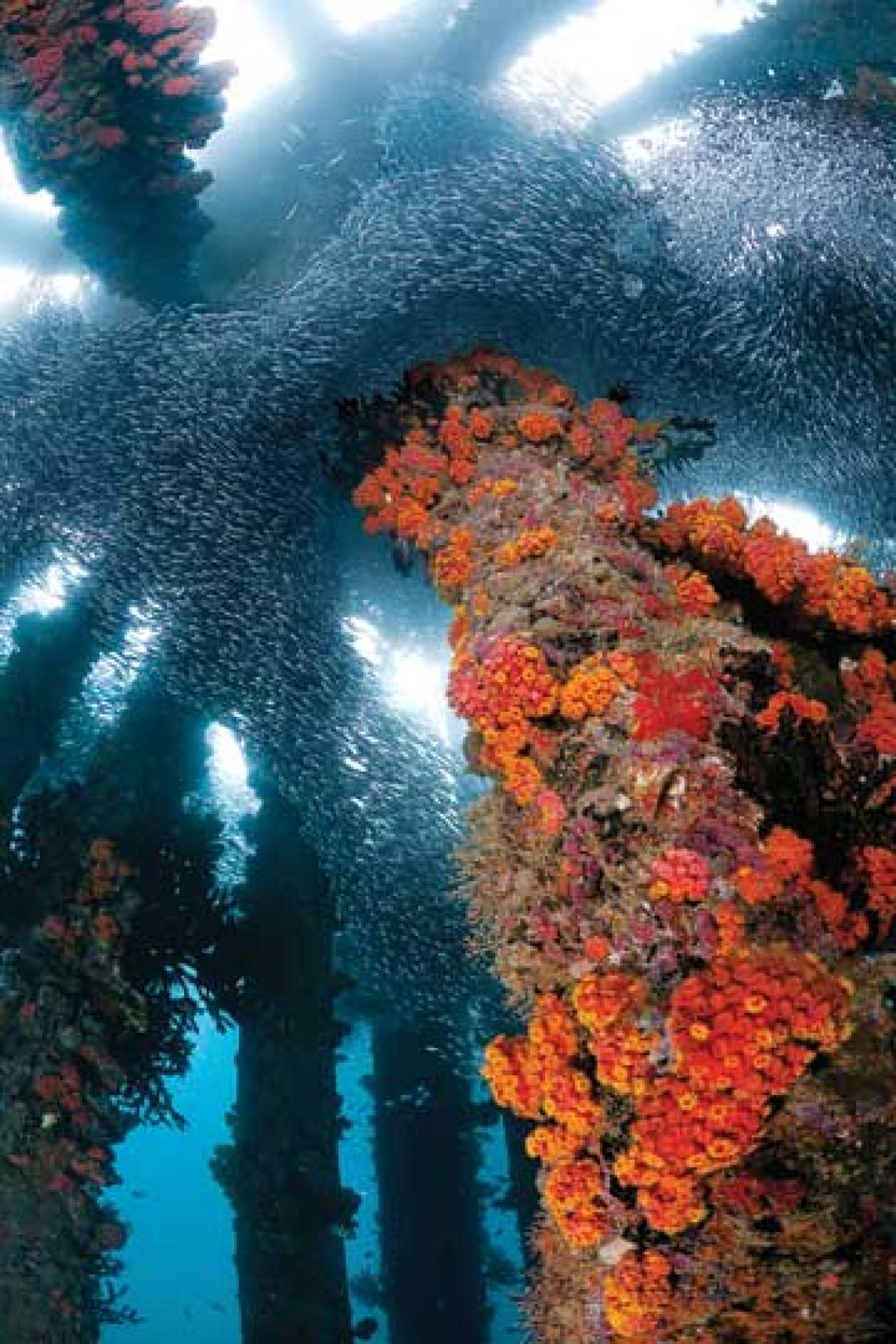
Michele WestmorlandSamarai Wharf
A TYPICAL DAY
Wake to the aroma of fresh Papua New Guinea highland coffee and a feast of exotic tropical fruit. Many dives here are close, while others make a worthwhile run to the outer coral-reef bommies. Of special note: The Tufi Wharf night dives are not to be missed — the guides are experts at spotting camouflaged denizens.
WHAT MAKES IT UNCOMMON
Tufi Fjord, part of Cape Nelson, offers unique topography for Papua, and is home to local villages. Women sport fantastically intricate face tattoos and are quick to interact. If the edge of the Earth calls to you, you’ll find it here in the southwestern Pacific.
3 DON’T-MISS DIVES
1 Honeymoon Reef The saddle between ridges hosts a huge stand of pristine lettuce coral — a perfect backdrop for patrolling reef sharks and fusiliers.
2 Mullaway Reef You can usually count on six to 10 gray reef sharks, plenty of turtles feeding in the shallows, pulsing schools of iridescent chromis, and countless other brilliant reef fish.
3 Tufi Wharf A mucker’s paradise in less than 30 feet, with WWII relics as well as bizarre findings and inhabitants.
TOPSIDE TIP
Go for a hike with a local guide. The true reward is the view from McClaren Fjord. — TB
CONTACT: chertan.com
Malaysian Borneo

Charo GertrudixA nudibranch off Sabah, Malaysia
A TYPICAL DAY
Much ink has been spilled over Sipadan, but don’t overlook the other small islands off Malaysian Borneo’s east coast. Mabul and Kapalai are the yangs to Sipadan’s yin, with weird macro critters and a unique house reef (on Kapalai). Guides are skilled in finding the ocean’s oddballs like ghost pipefish and camouflaged frogfish.
WHAT MAKES IT UNCOMMON
There’s nothing to do on Mabul and Kapalai but dive, dive, dive. And best of all, the diving’s easy.
3 DON’T-MISS DIVES
1 Seaventures Rig, Mabul This former oil rig holds rarities like nudibranchs and pygmy seahorses.
2 Froggy Lair, Mabul Hidden among the rubble: frogfish, nudibranchs and the flamboyant cuttlefish.
3 The Jetty (Kapalai) Five wrecks are clustered together at the end of this short jetty. Peek inside for crabs and morays.
TOPSIDE TIP
If you fly through Kota Kinabalu, the Orangutan Care Project is a good opportunity to visit these awesome terrestrial animals. — DE
CONTACT: borneodivers.info
Maldives
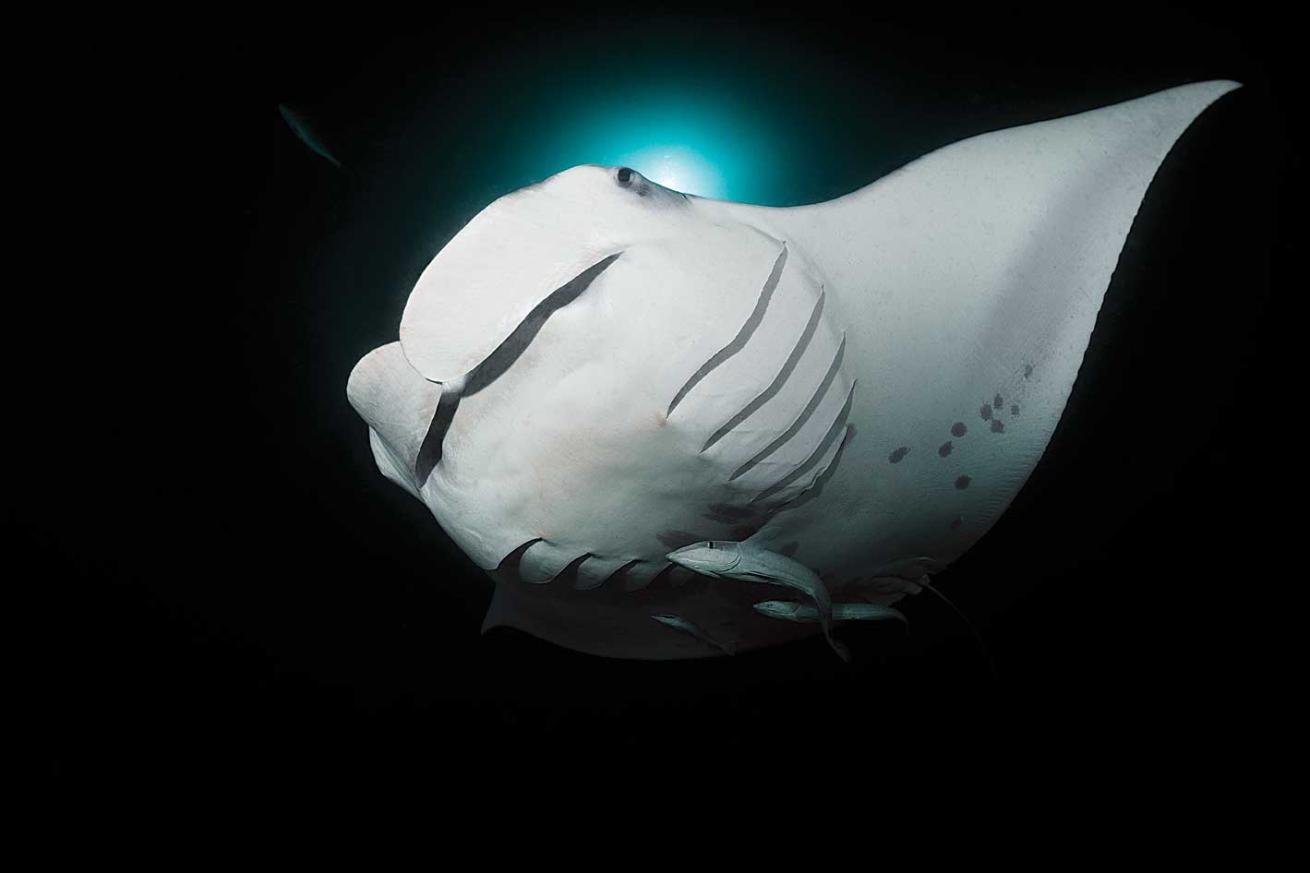
Charo GertrudixA manta in the Maldives
A TYPICAL DAY
You’d need a lifetime to explore the dive sites of Maldives’ nearly 1,200 islands. Luckily, since the diving is awesome everywhere, the toughest decision you’ll ever have to make will be choosing between cruising the 26 atolls, diving from a liveaboard like the Four Seasons Explorer versus ensconcing on a single-resort paradise island, and getting to know each nearby site more intimately. Whatever you decide, you’re virtually guaranteed encounters with eagle rays, reef sharks and schooling fish, and each atoll has at least one manta aggregation site.
WHAT MAKES IT UNCOMMON
Warm water and dives with nonstop parades of mantas and sharks; Maldives has some macro, but this is a big-fish paradise.
3 DON’T-MISS DIVES
1 Manta Point (every atoll) Though the name might differ from atoll to atoll, virtually every resort has a nearby manta aggregation site for some manta face time.
2 Kandooma Thila, South Male Atoll A teardrop-shaped thila that starts at 50 feet, the northern and western edges can draw a massive school of jacks, and packs of white-tip and gray reef sharks (and eagle rays).
3 Fish Head, Ari Atoll Located in the middle of nowhere, this small pinnacle has marine-protected-area status, and is a favorite for its gray reef sharks and snapper.
TOPSIDE TIP
No trip to the Maldives is complete without a village tour. Doesn’t matter the island; the people everywhere are warm and friendly to visitors. — DE
CONTACT: fourseasons.com
Malta
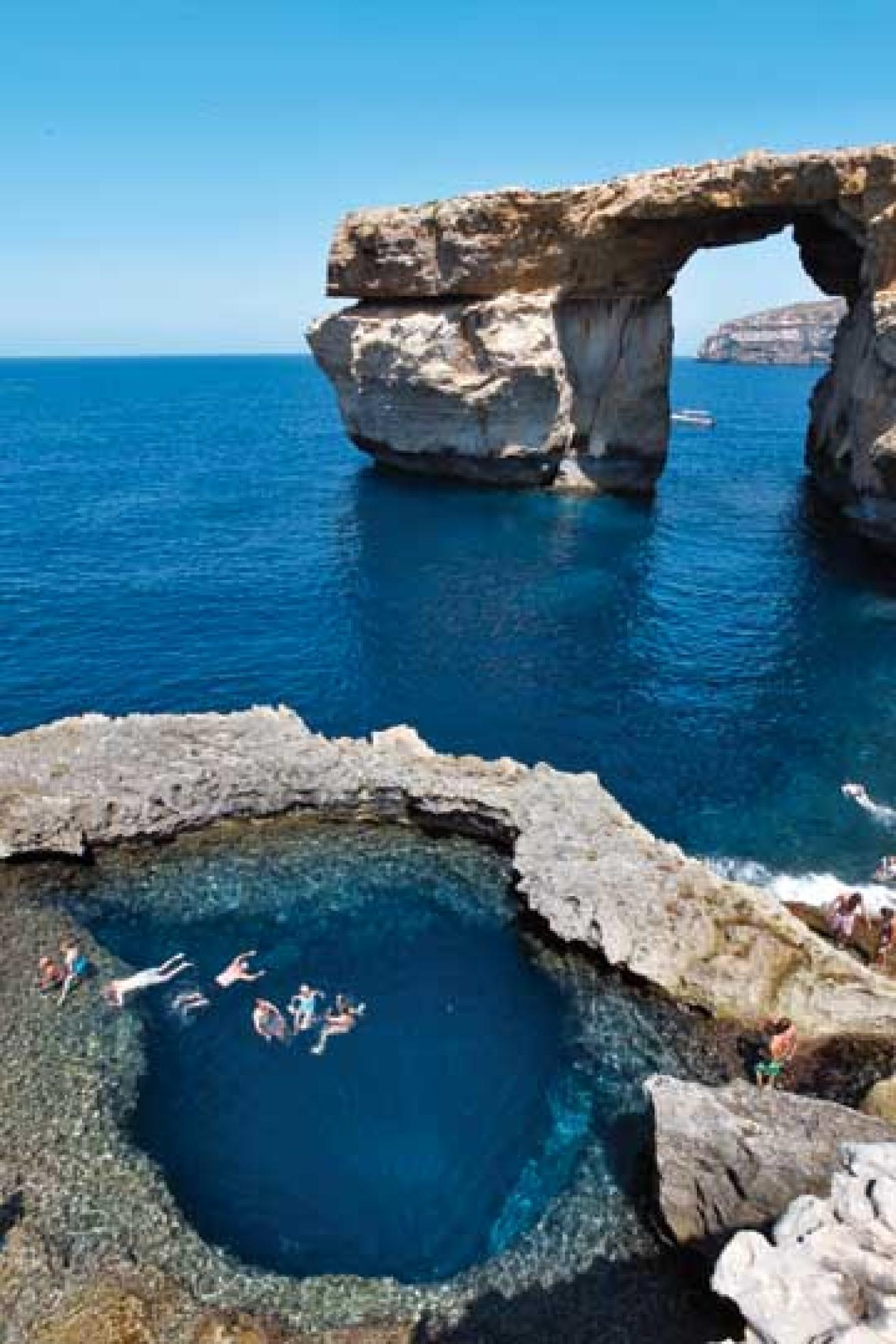
Tobias FriedrichThe Azur Window in the Mediterranean Sea
A TYPICAL DAY
This Mediterranean island is all about history. Wrecks, both historical and artificial, are among the most common draws for divers — and most can be done from shore. You can make your own dive schedule or get a personal tour with Dive Malta in the town of St. Julian’s or Dive Deep Blue on the northeast coast. Dive trips typically depart at 8:30 a.m. for two dives from shore or boat. If you opt for the boat excursion, you’ll also gain access to the sites on the neighboring isle of Gozo, just one mile away.
WHAT MAKES IT UNCOMMON
Malta lies smack in the middle of the Mediterranean, and all of its storied history. History buffs can discover wrecks from both world wars, as well as caves and caverns.
3 DON’T-MISS DIVES
1 Um El Faroud The 377-foot oil tanker was purpose-sunk in 1995 off Malta’s southwest coast in 114 feet of water. It’s upright but split in two halves.
2 Imperial Eagle Sister ship to Jacques-Yves Cousteau’s original Calypso, this former ferry now lies at about 130 feet, and is adjacent to a reef and a statue of the Ascension of Christ.
3 Anchor Bay The cavern dive is extremely safe with one entry and one exit; inside, if you devote time, you’ll spy shrimp, morays, octopuses and lobsters.
TOPSIDE TIP
Spend at least half a day inside the walled city of Mdina, taking a break with coffee and cake at the Fontanella Tea Garden. — BM
CONTACT: scubadivingmalta.com
Lembeh Strait
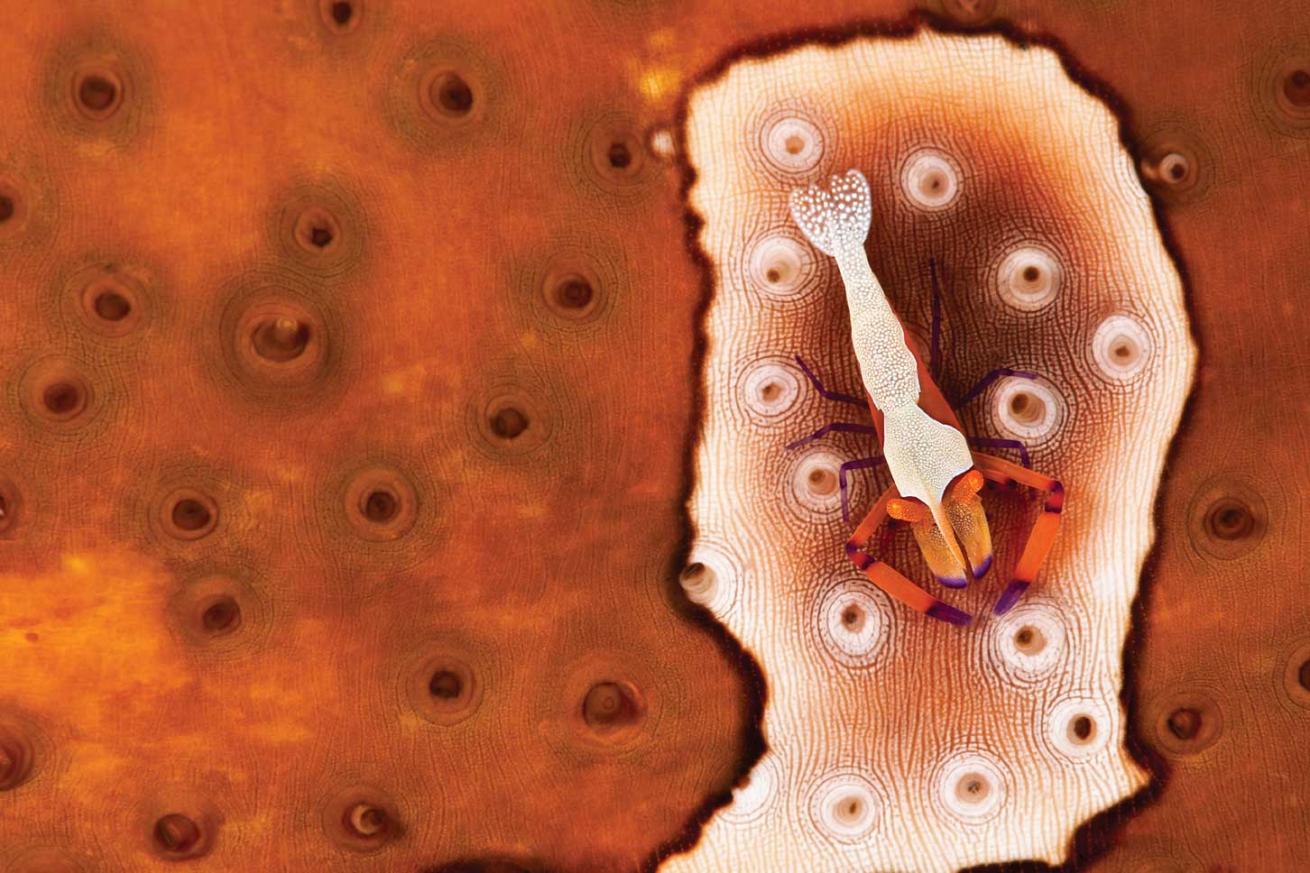
Jürgen FreundAn imperial shrimp on a sea cucumber
A TYPICAL DAY
Since the mid ’90s, Indonesia’s Lembeh Strait has grown exponentially in popularity with divers in search of the ocean’s oddballs. Bring a list of what you want to see, and your guides will help cross off every one: an octopus with a mohawk? Check. Hirsute frogfish? Check. Plus more eels, nudibranchs, rhinopias, cuttlefish, boxer crabs and shrimp than you can count. With due respect to Asia Pacific’s amazing critter destinations, Lembeh Strait is the Mecca of Muck. And after one week there, you’ll have seen everything there is to see (not really).
WHAT MAKES IT UNCOMMON
You’ll spend the majority of your bottom time swimming back and forth across seemingly desolate black sand. Swim slowly, look closely, and you’ll find the tiny treasures.
3 DON’T-MISS DIVES
1 TK1 Logs and discarded fishing nets from the nearby village are strewn across the black-sand bottom hiding mimic octopuses, pegasus sea moths and leaf scorpionfish.
2 Nudi Falls Comb the soft-coral beds for ribbon eels and gobies, before ascending shallower to find pygmy seahorses and a logbookful of nudibranchs.
3 Hairball Named for the “hairy” frogfish and pipefish found here, Hairball is also a hot spot for decorator crabs, coconut octopuses, flamboyant cuttlefish and stargazers.
TOPSIDE TIP
Set aside a day to visit the Tangkoko Nature Reserve, a short drive from Lembeh. There you’ll (hopefully) see hornbills, cuscus and endemic tarsiers. — DE
CONTACT: reefrainforest.com
St. Lucia

Kevin Panizza/istock photoThe virbant reef off St. Lucia
A TYPICAL DAY
This Lesser Antilles Island of green jungles and hillside hotels sets the stage for epic romance. Underwater, encounter volcanic craters and a critter-rich community. For convenience, base yourself on the island’s northern end, which holds the majority of infrastructure, including newer accommodations, high-end shopping, late-night restaurants and bars, plus golden sand beaches.
WHAT MAKES IT UNCOMMON
You need only peer up at the vertical spires known as the Pitons to understand why diving St. Lucia is a cornucopia of topography.
3 DON’T-MISS DIVES
1 Superman’s Flight Located at the base of Petit Piton, dive mineral-rich waters with fluorescent pink sponges. Fun fact: The cliff face was the shot location for Superman II.
2 Lesleen M This inter-island freighter became an artificial reef near Marigot Bay in 1986. It’s now home to snapper, sergeant majors and parrotfish.
3 Anse Cochon South Beach Thanks to the variety of topography — patch reefs, boulders, walls made of pinnacles and boulders— it’s not uncommon for divers to spot squid, frogfish and seahorses.
TOPSIDE TIP
To witness thousands of the island’s indigenous green parrots coming in to roost, hike into the rainforest around 4 p.m. — or at 6 a.m., when they take off for the day. Find them along any trail near Marigot Bay or Vanard. — BM
CONTACT: divesaintlucia.com





